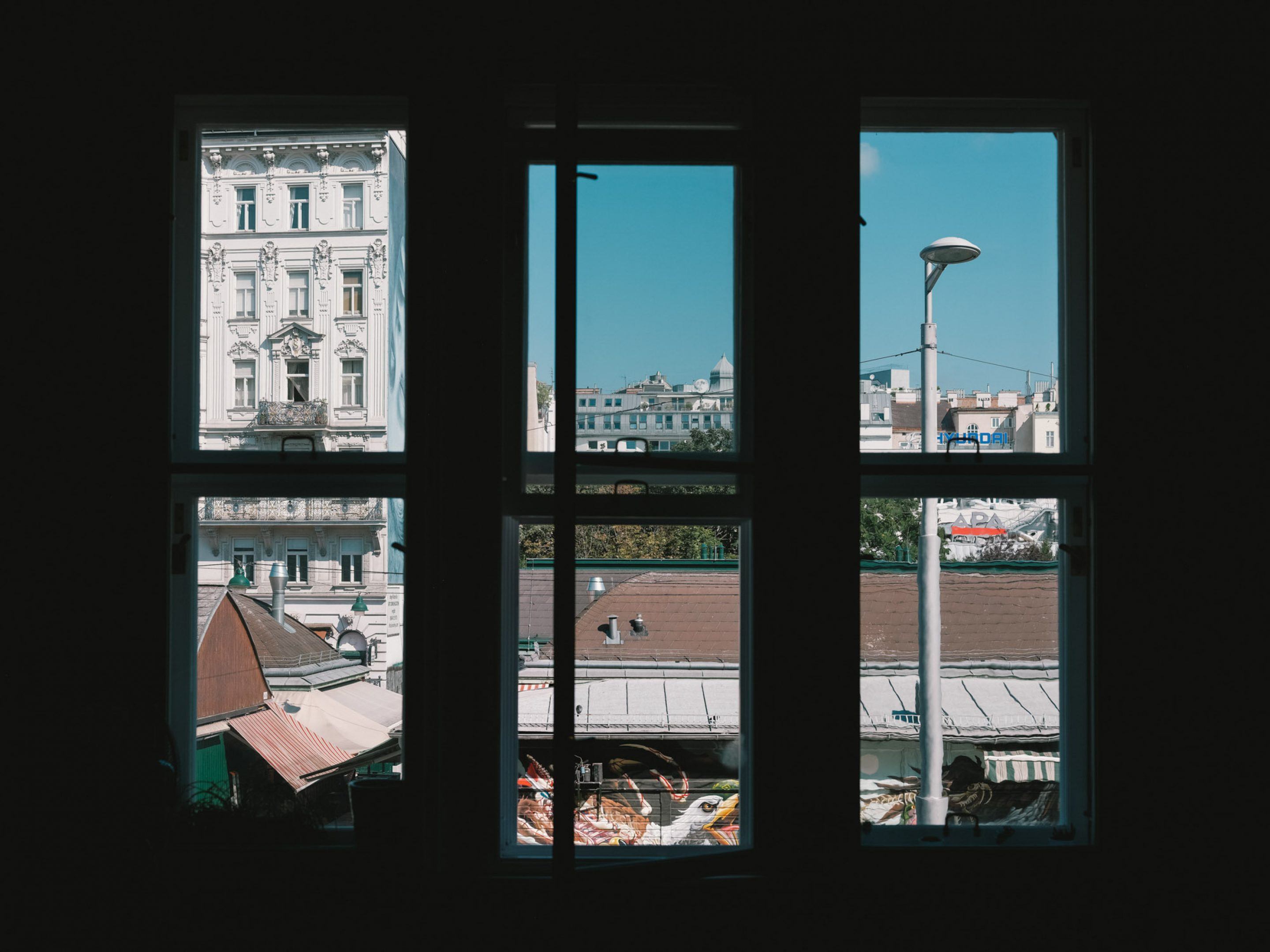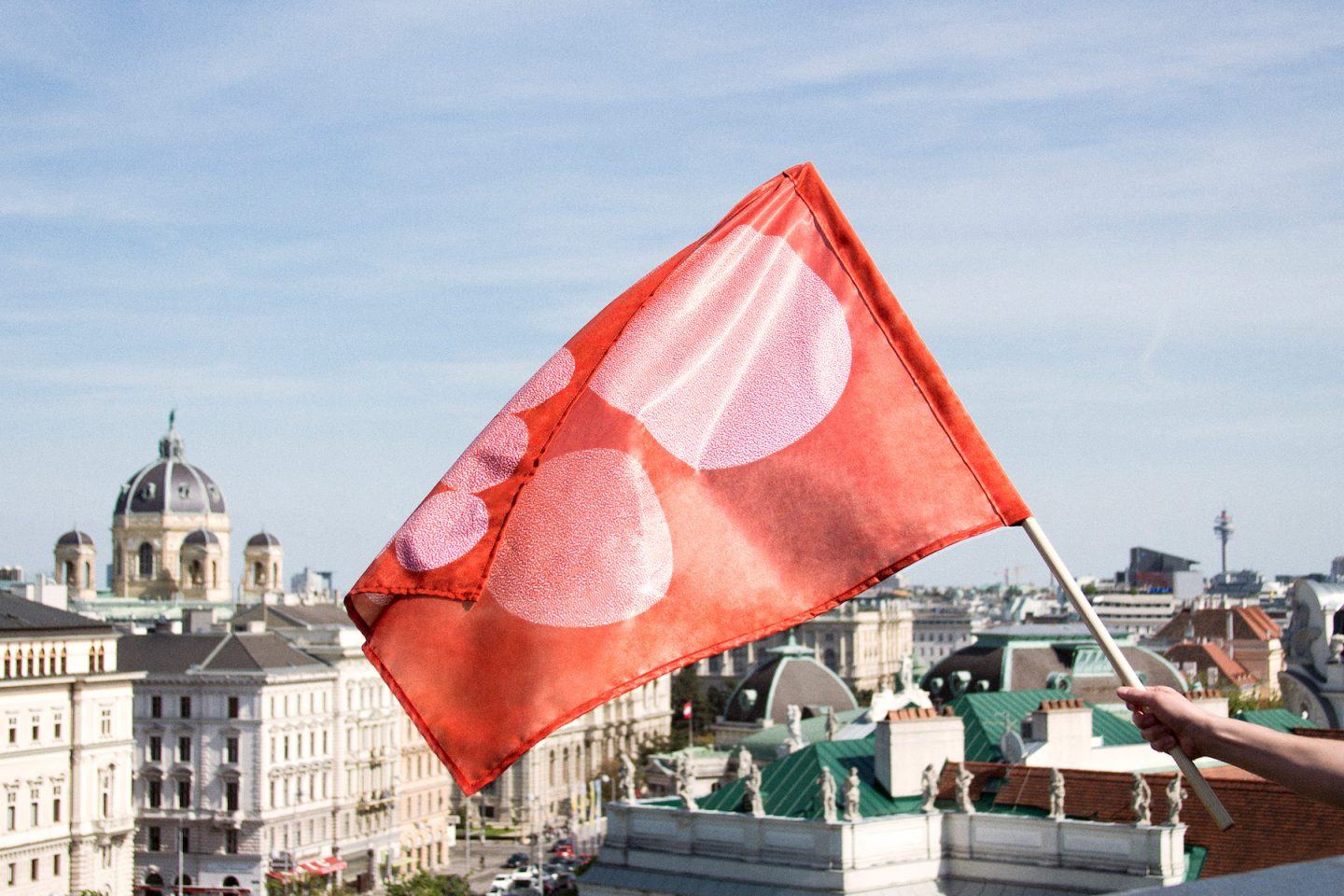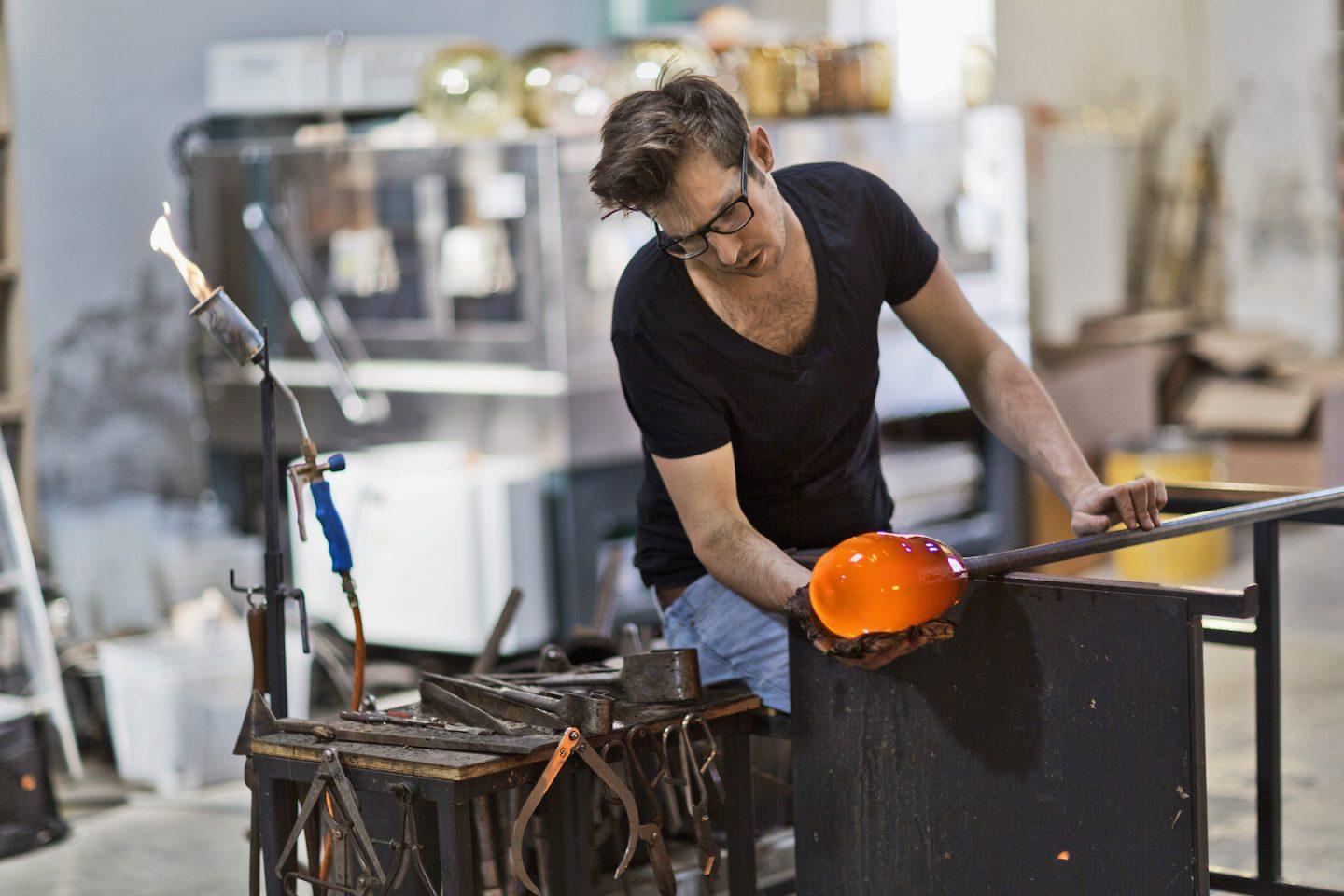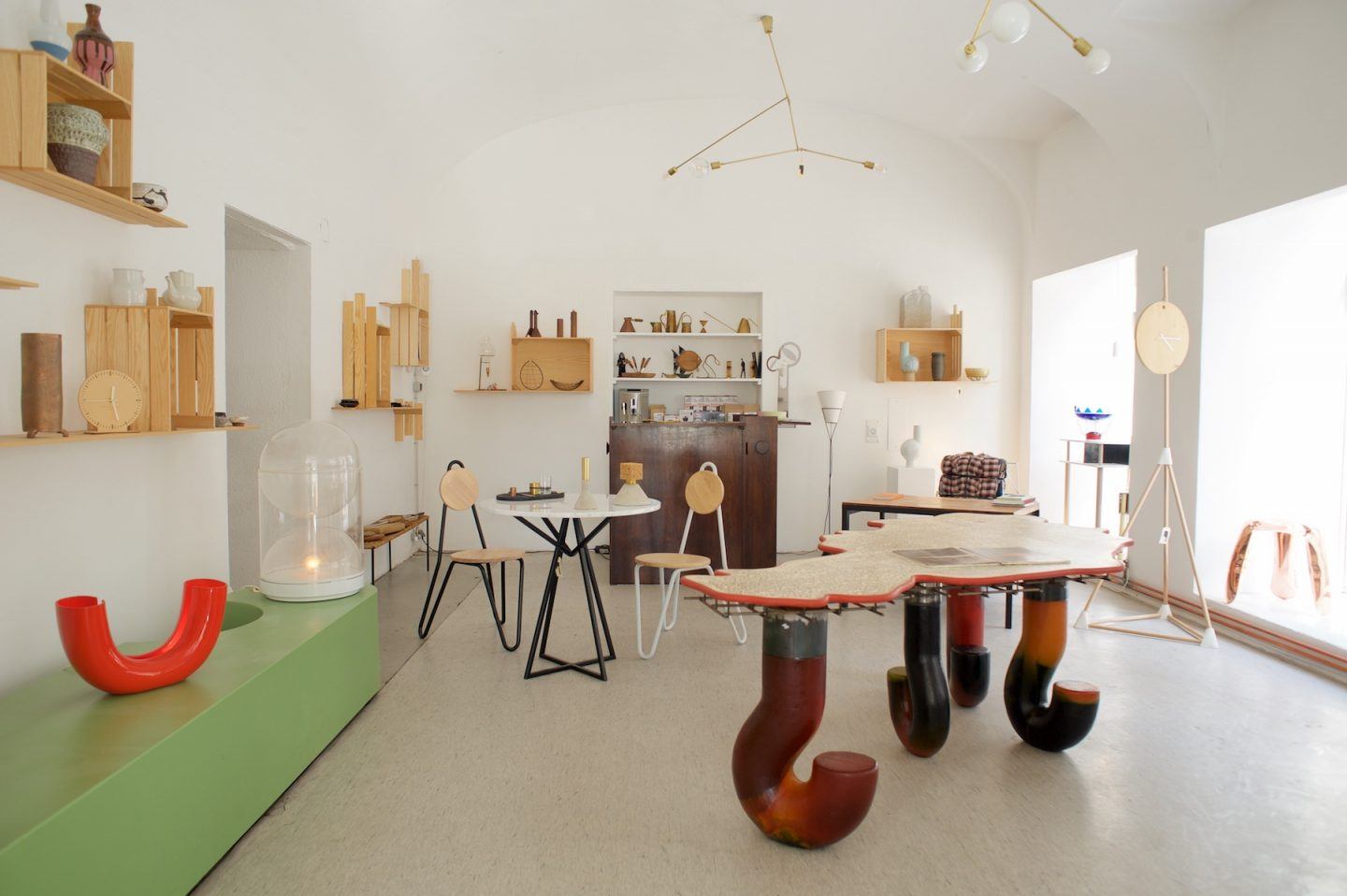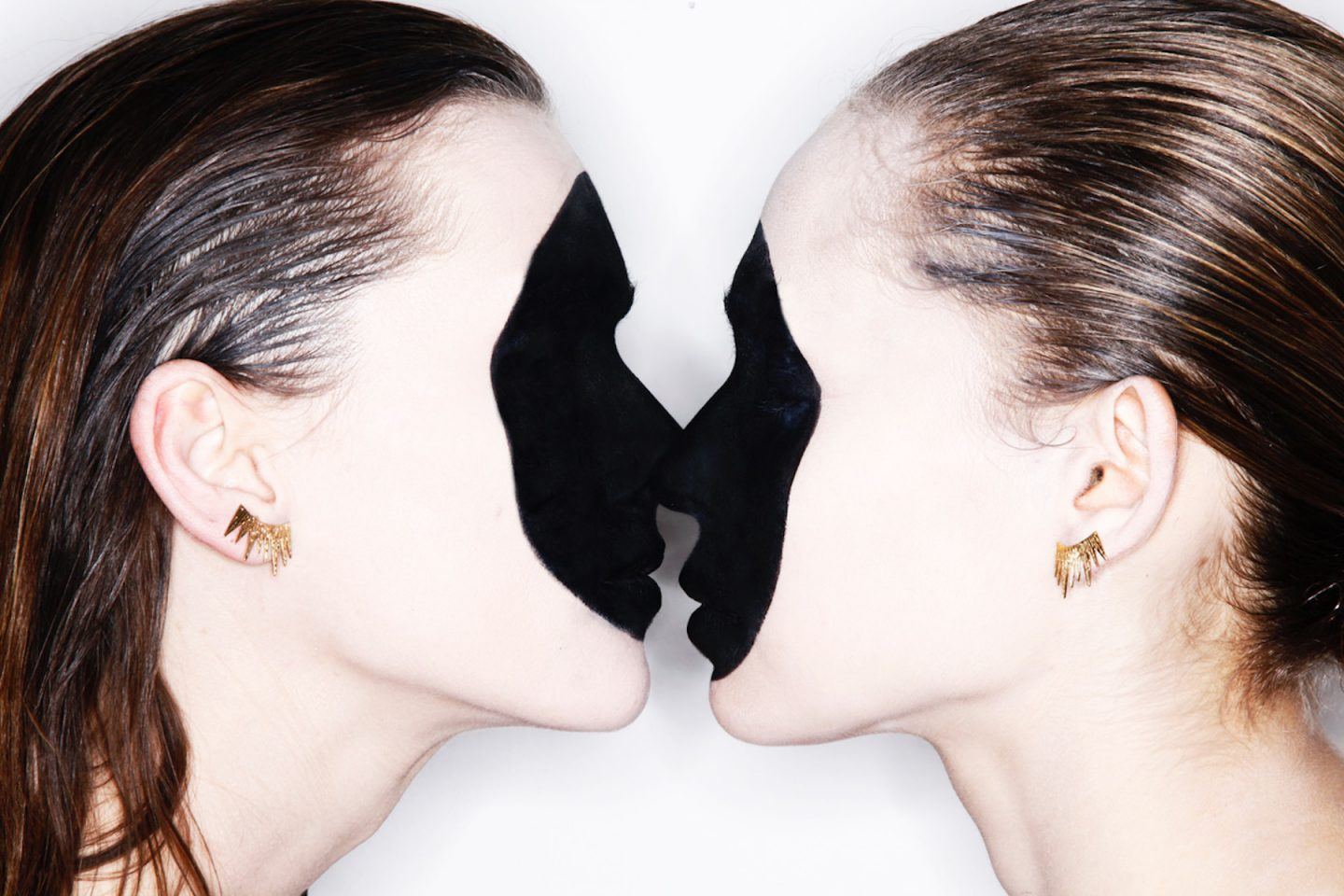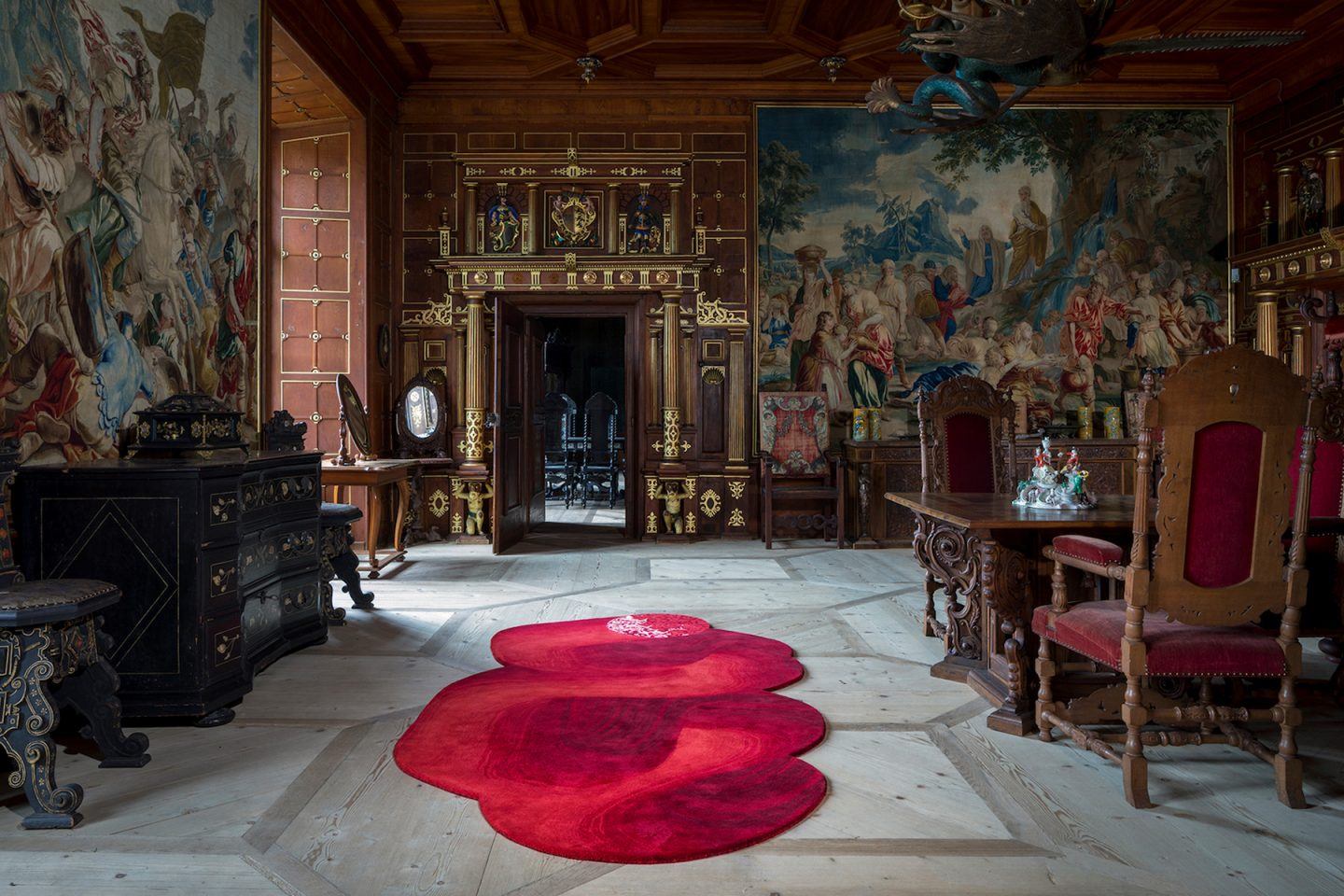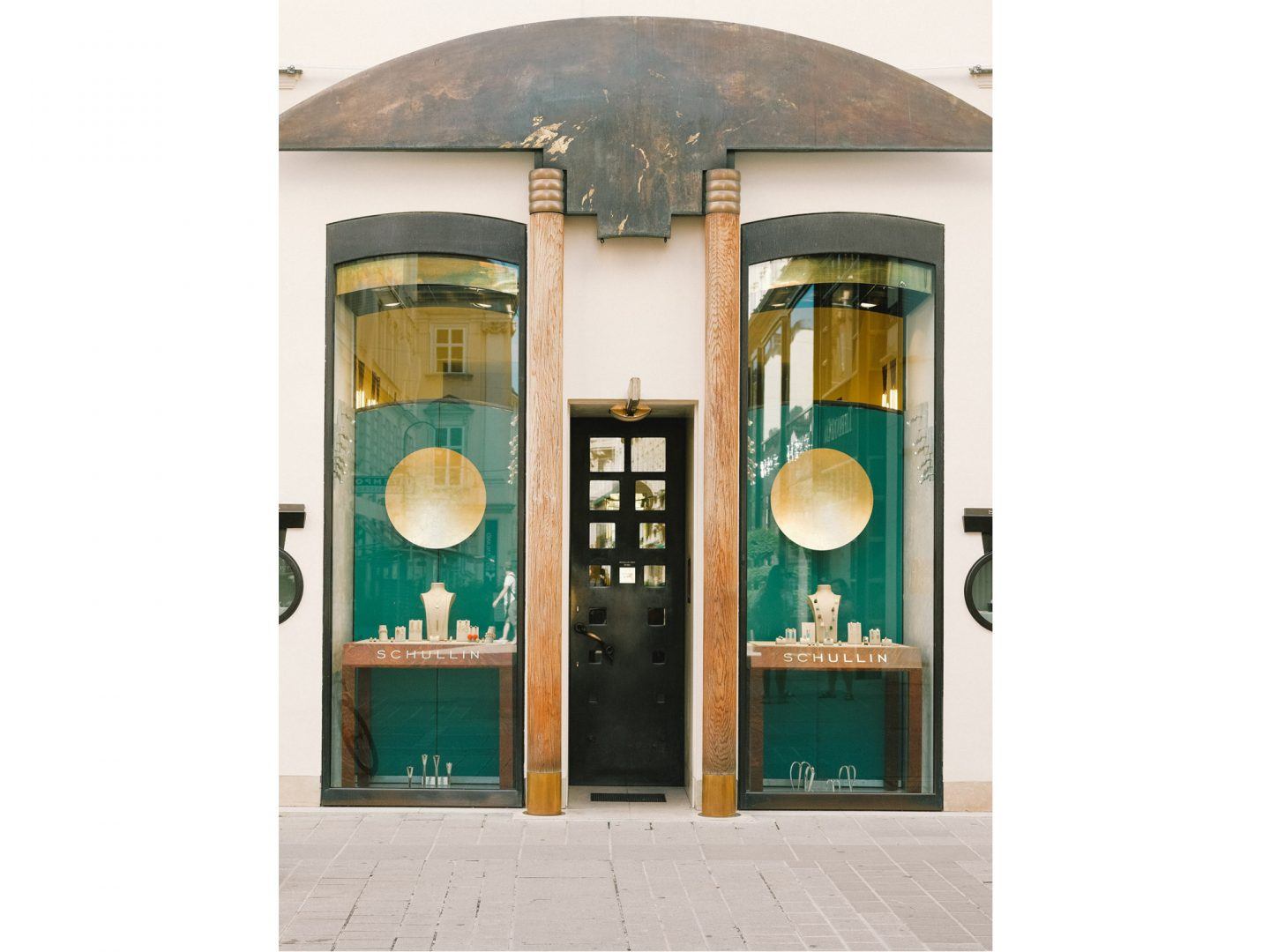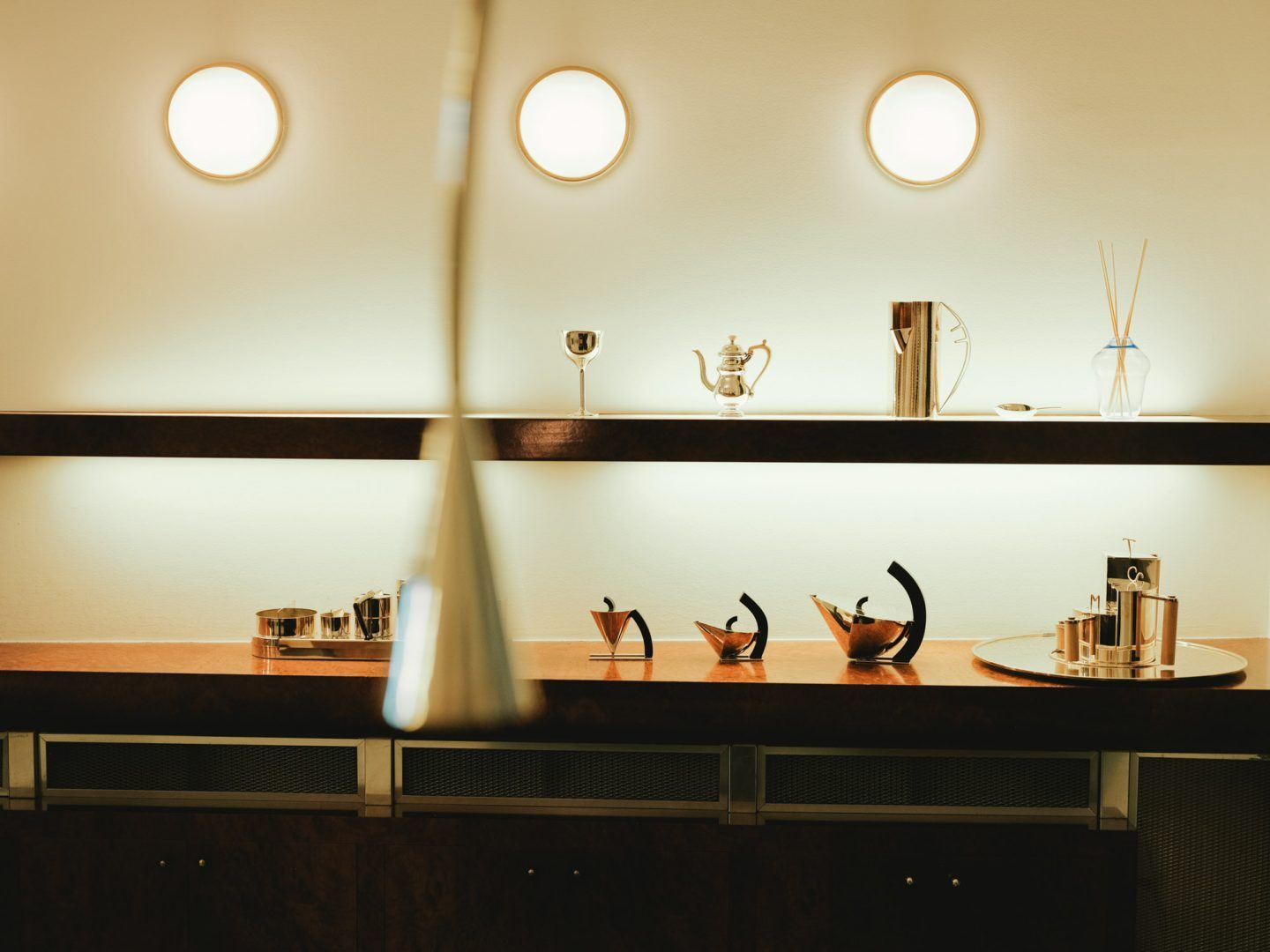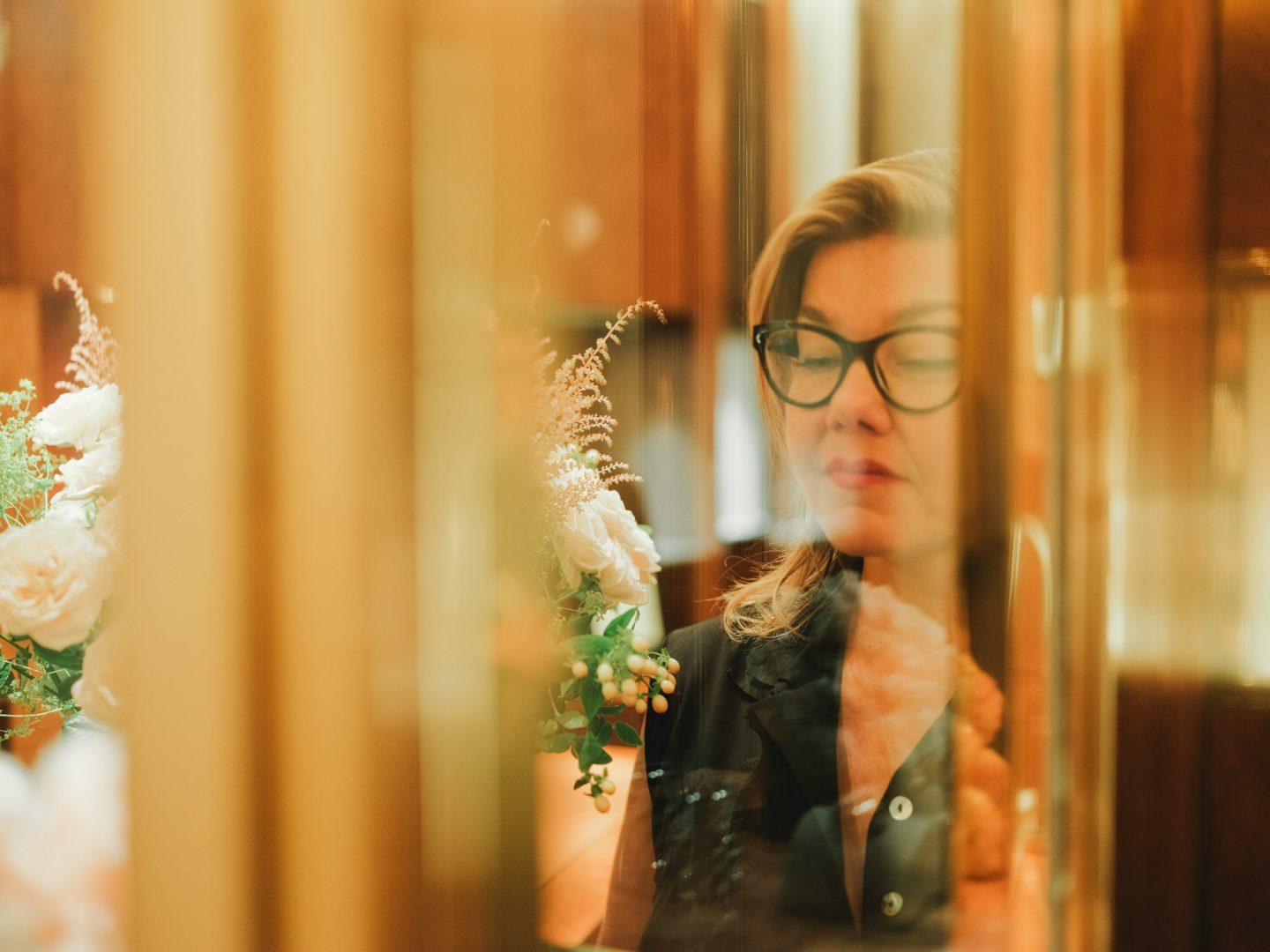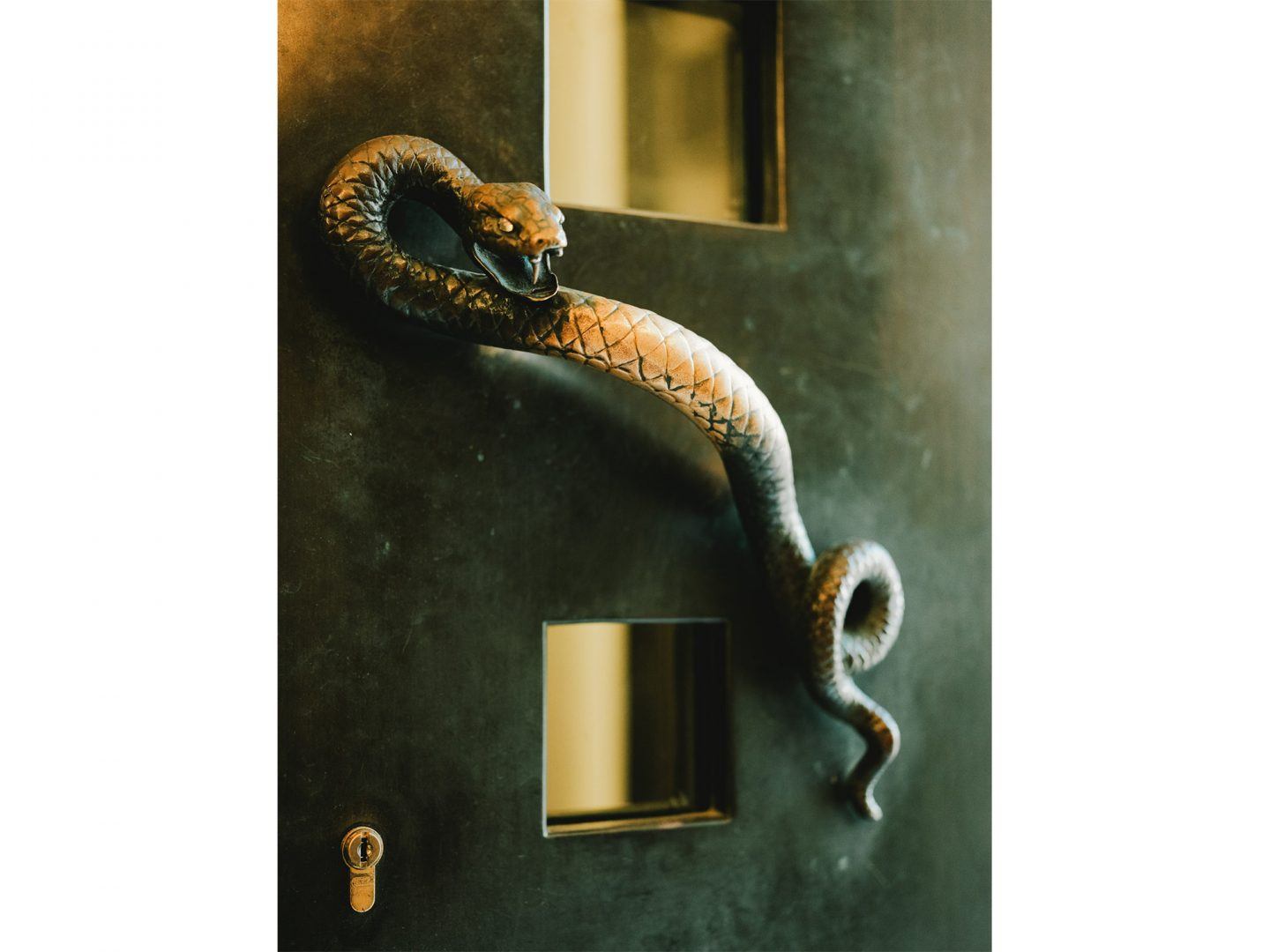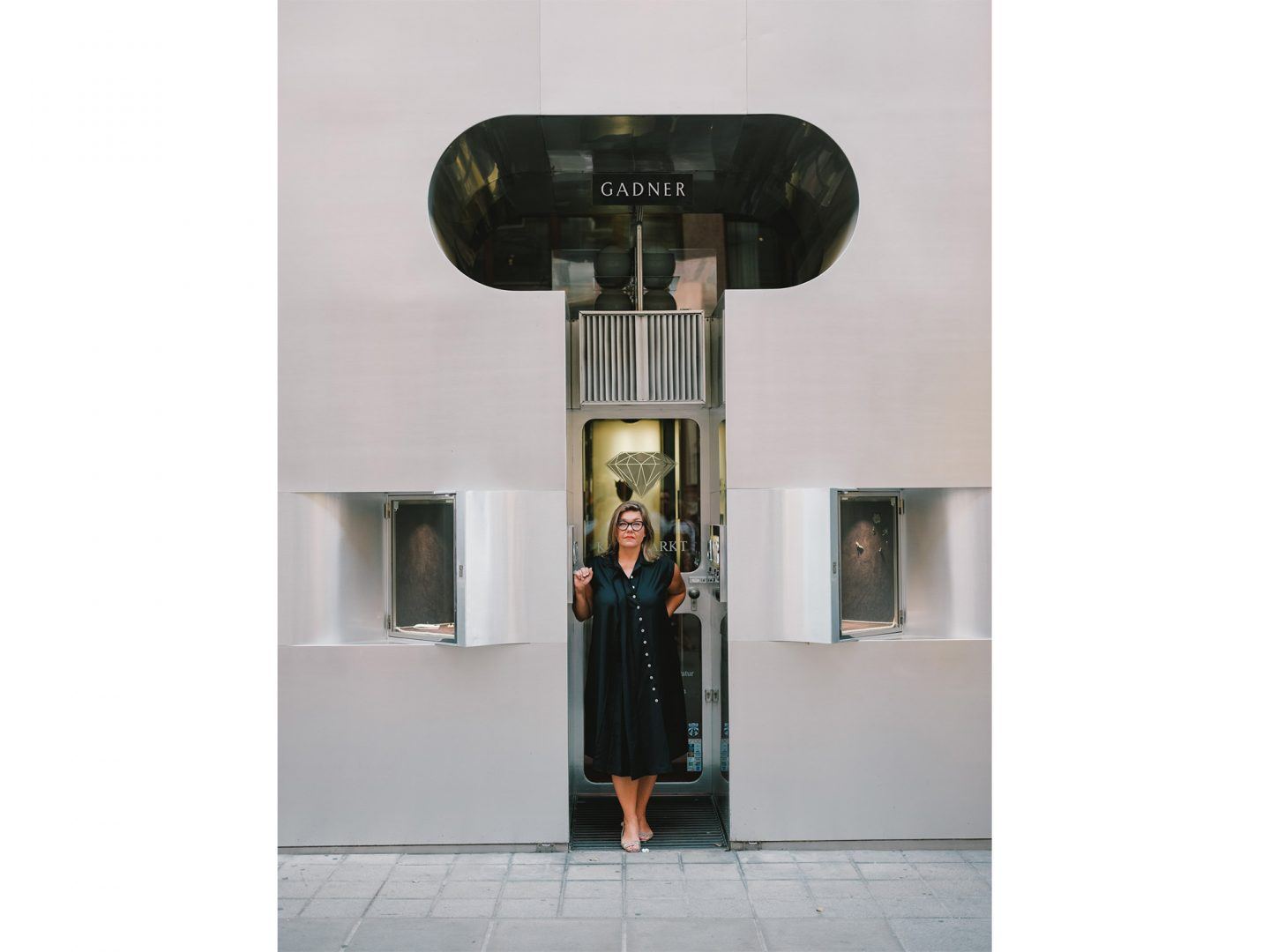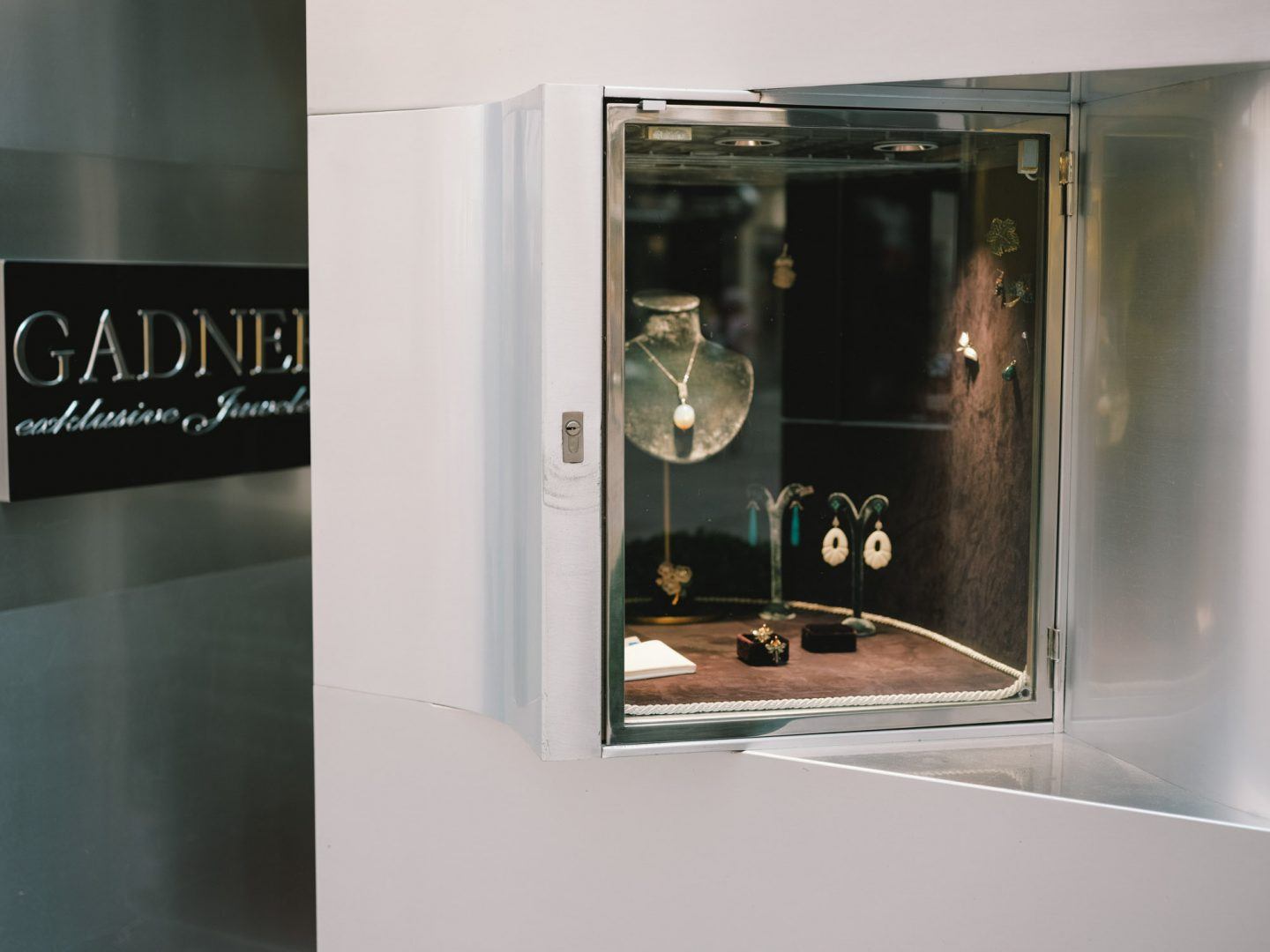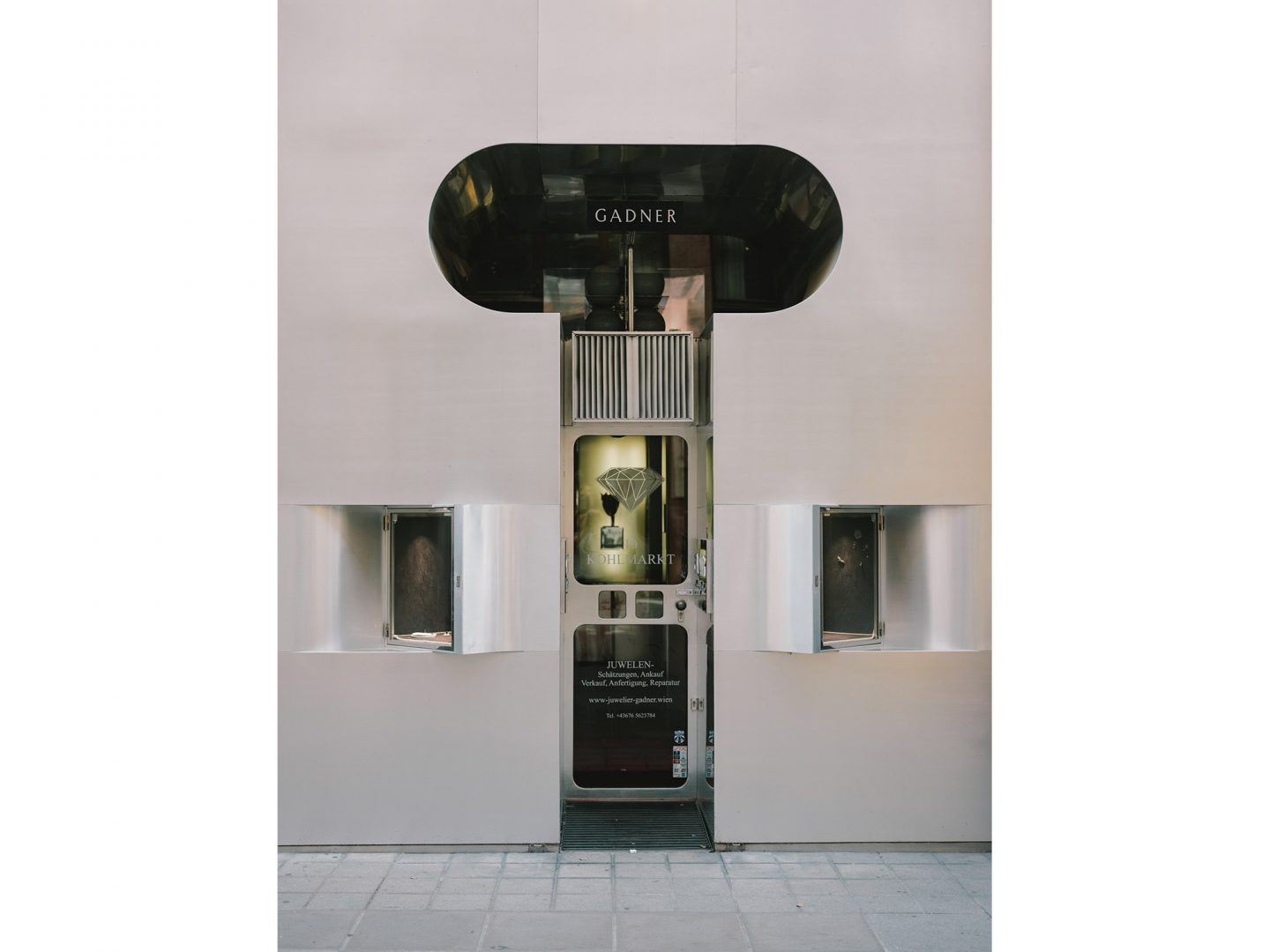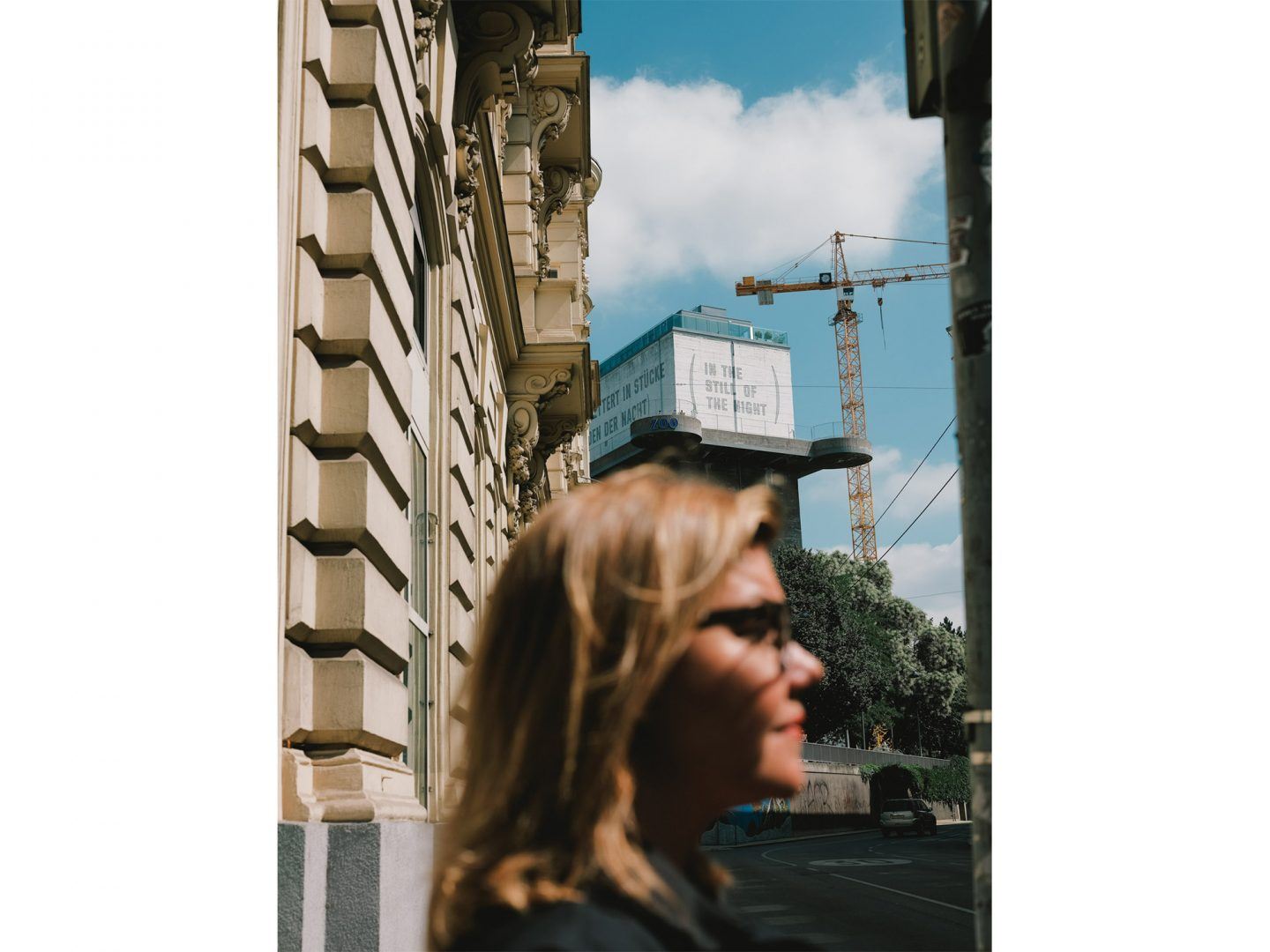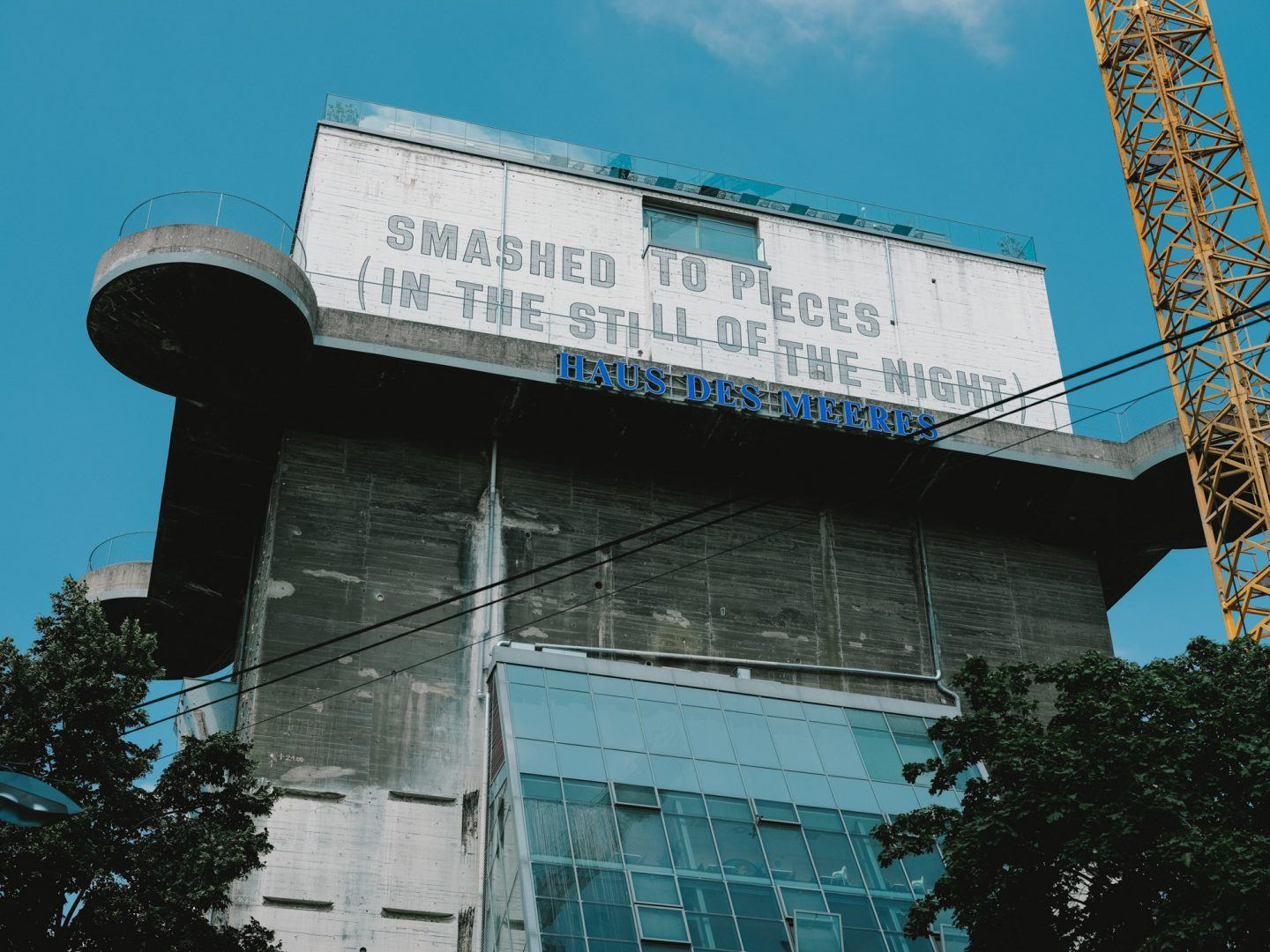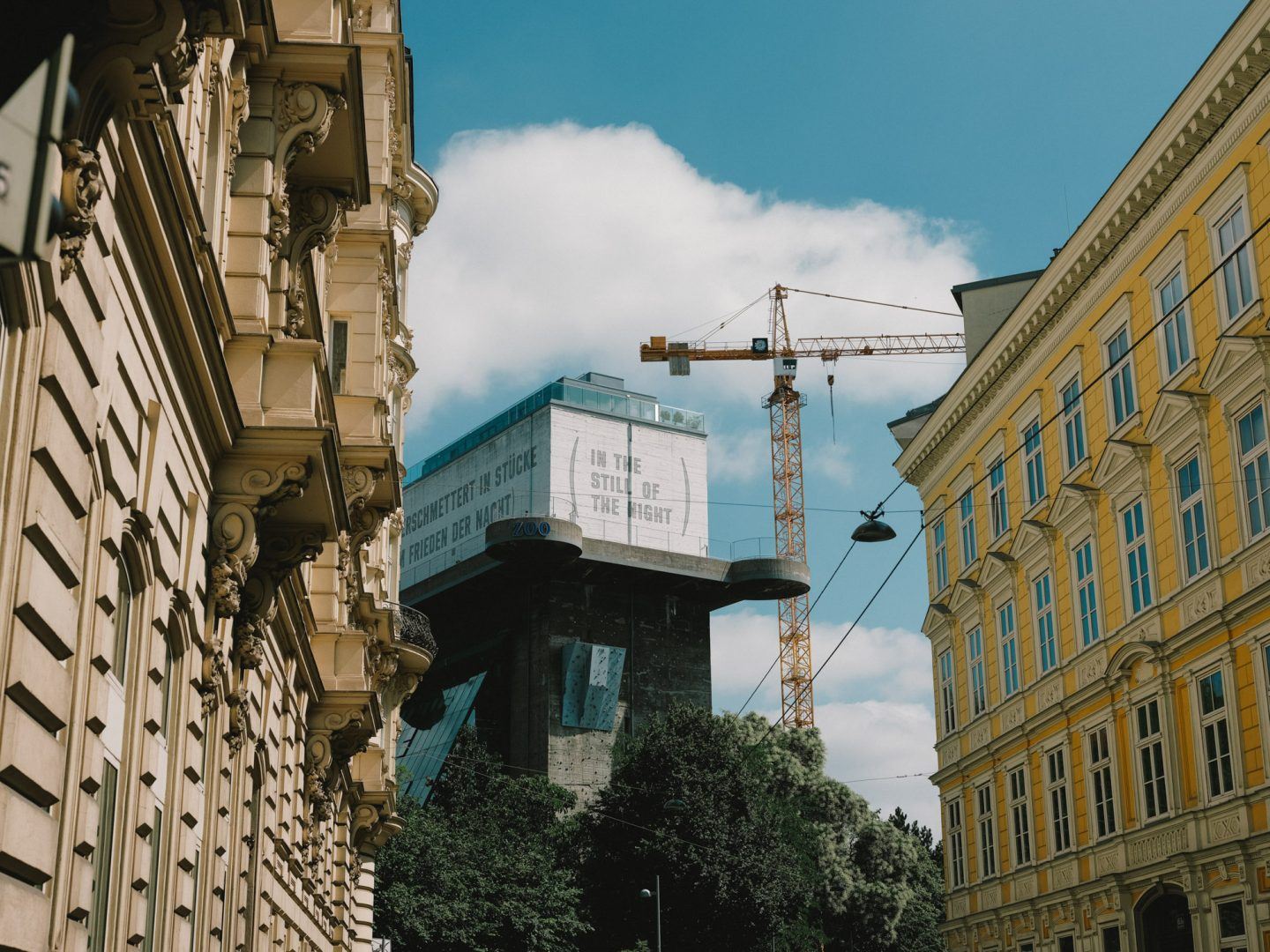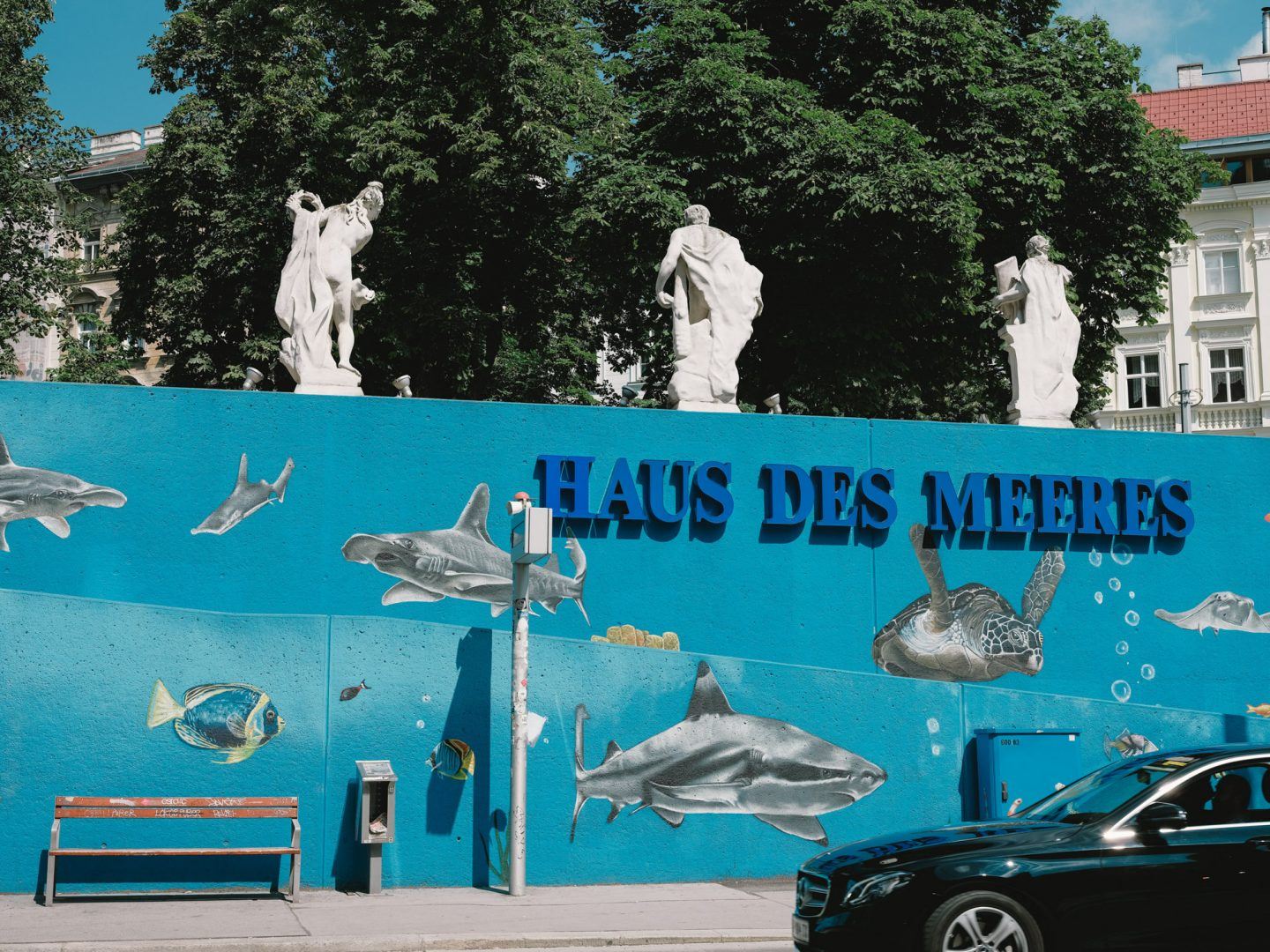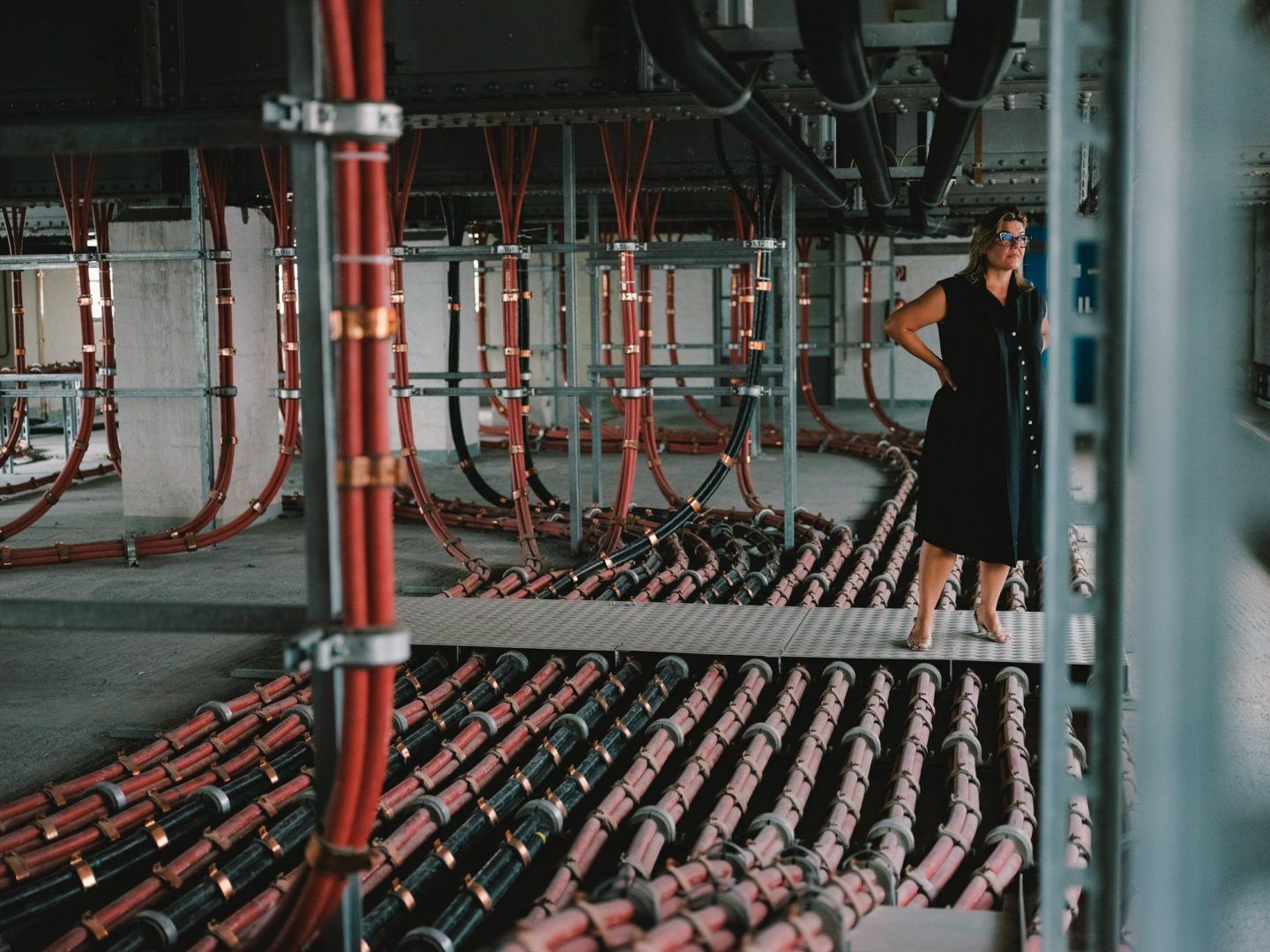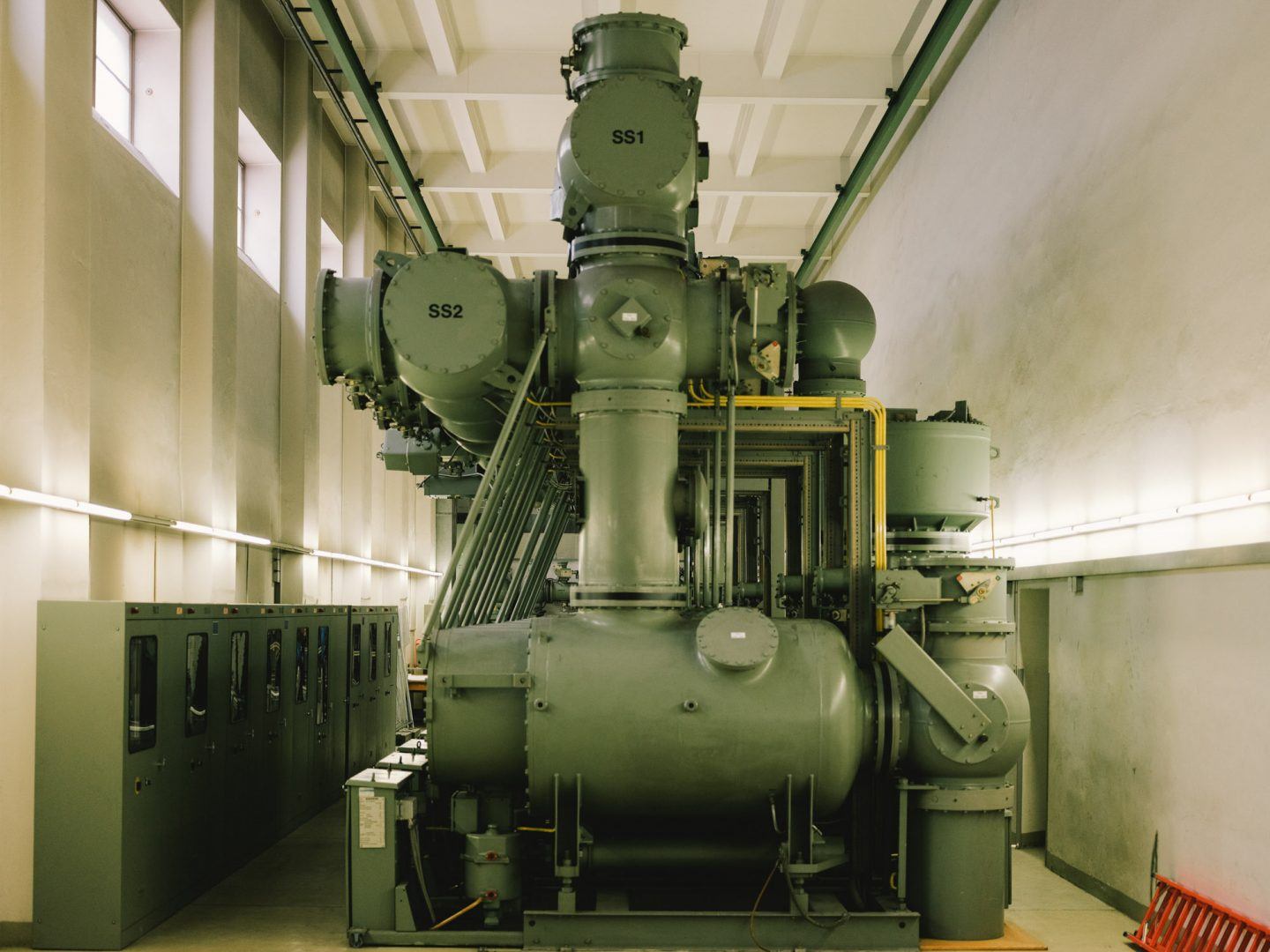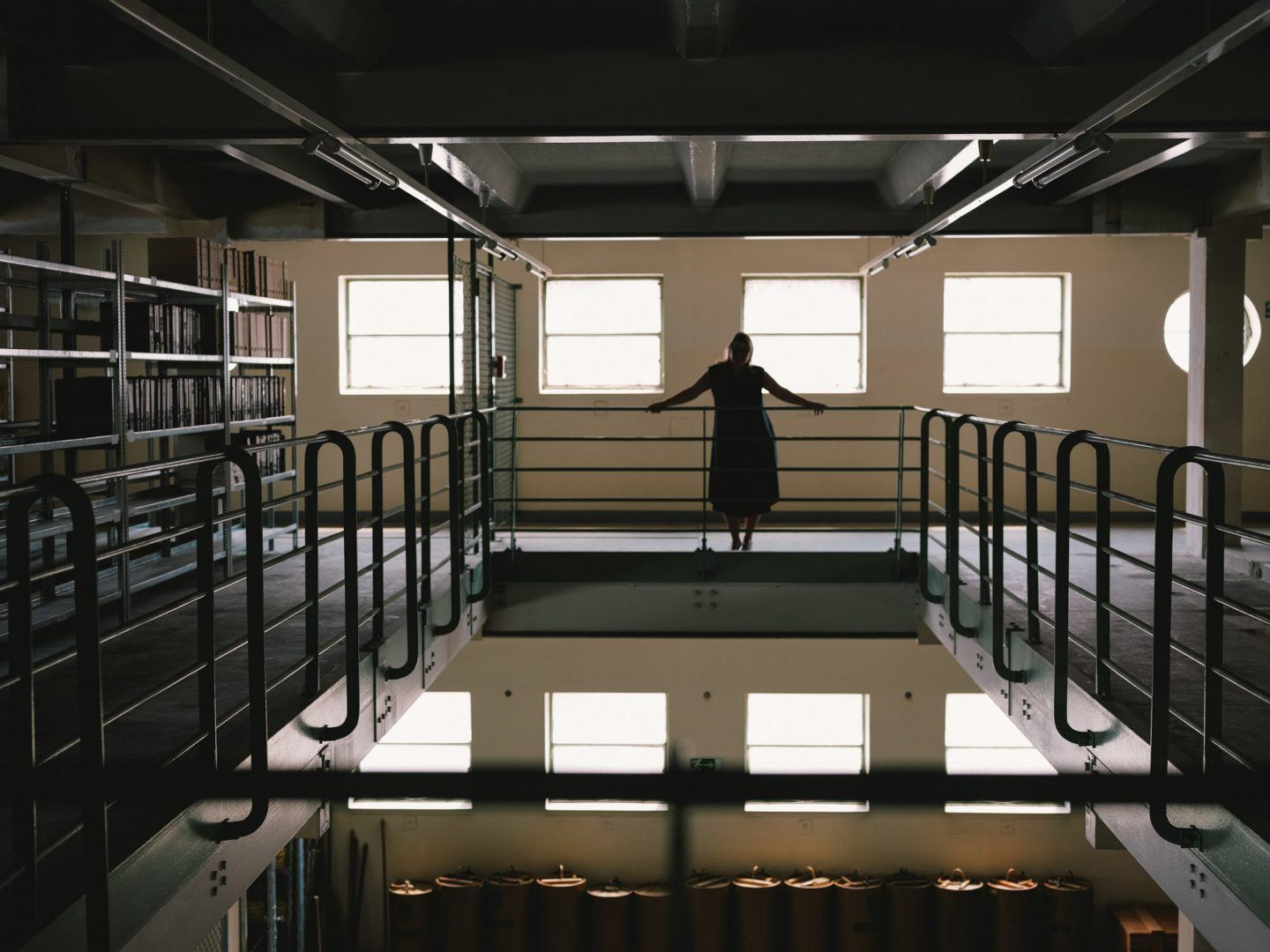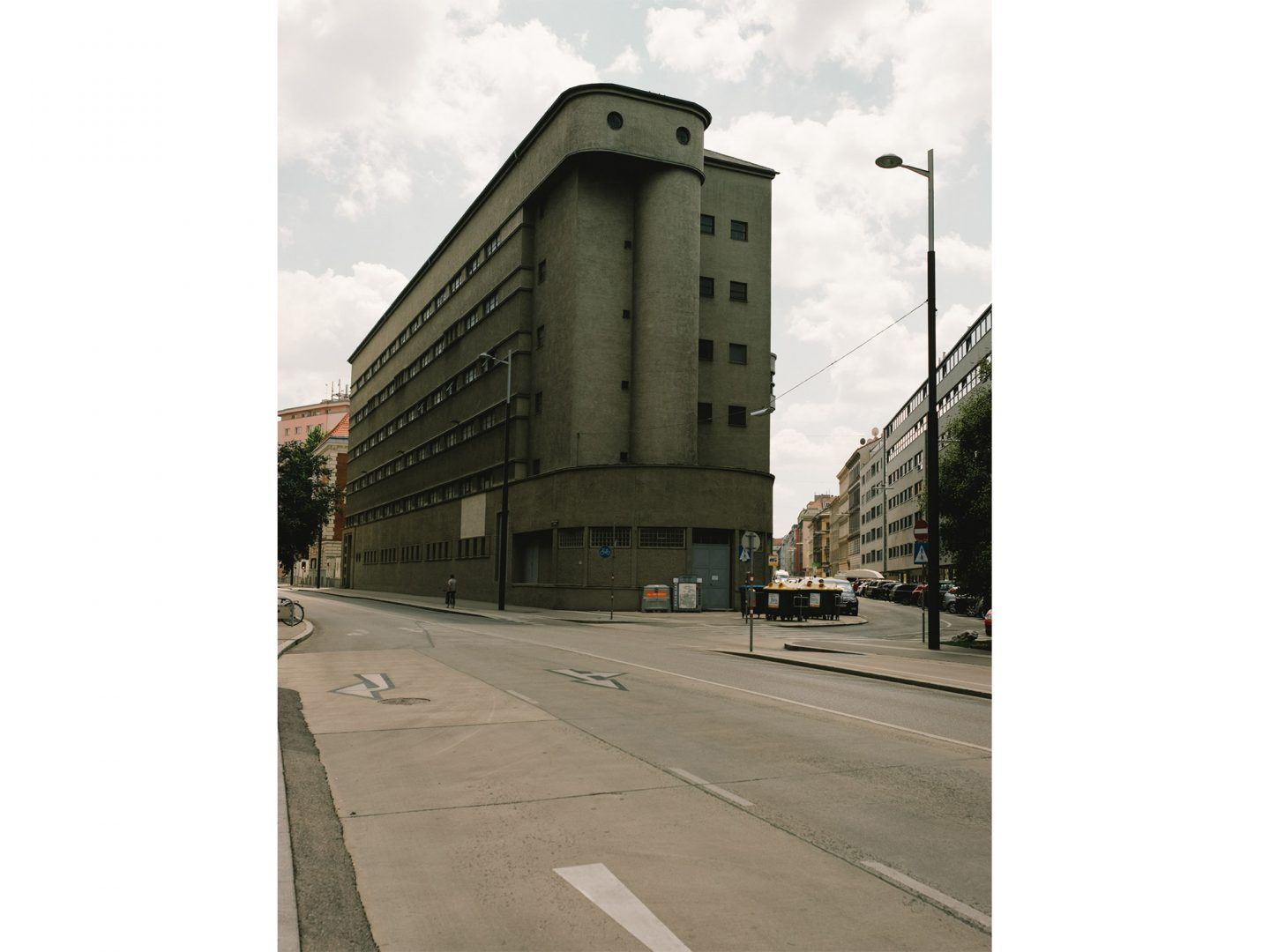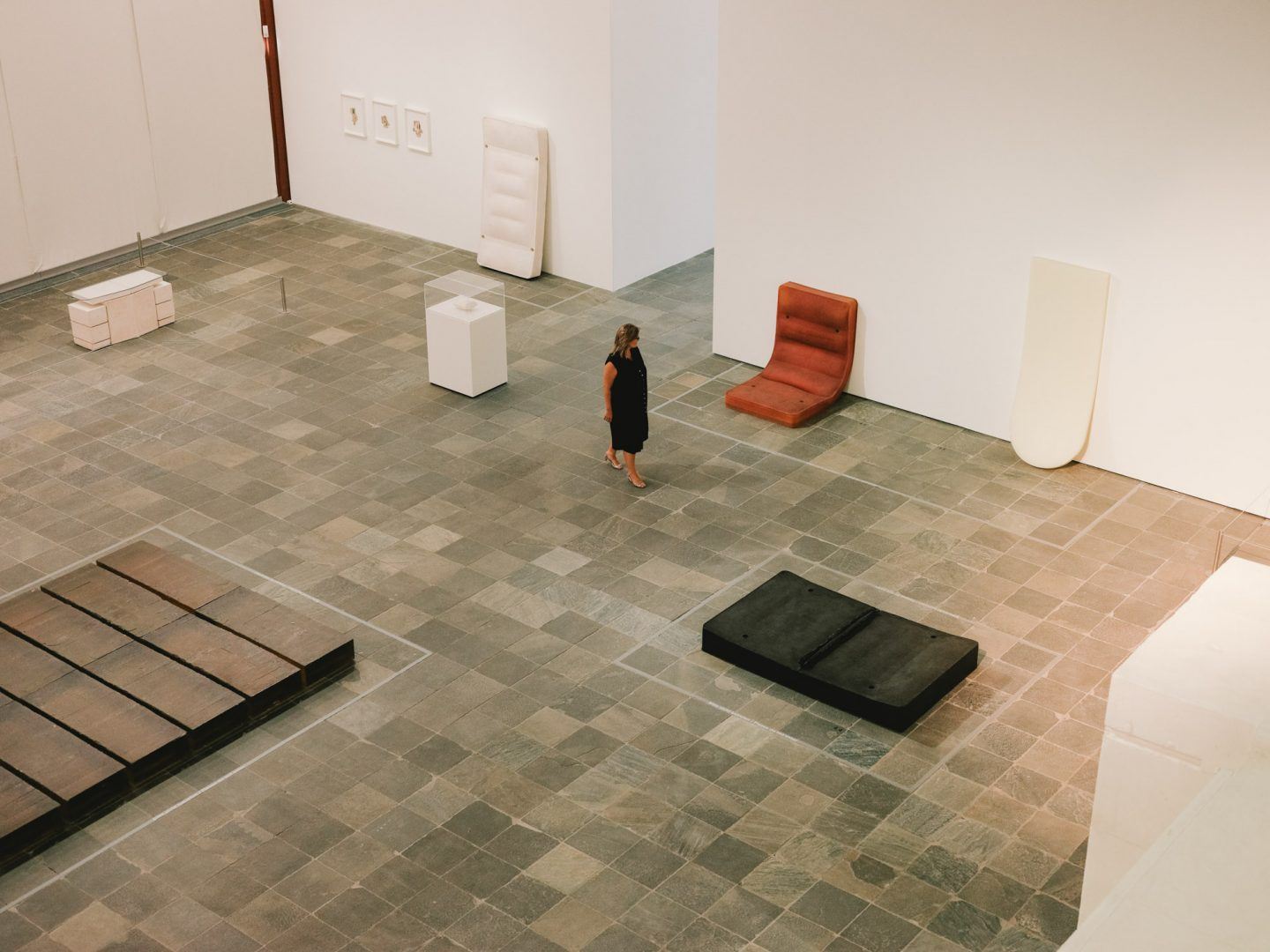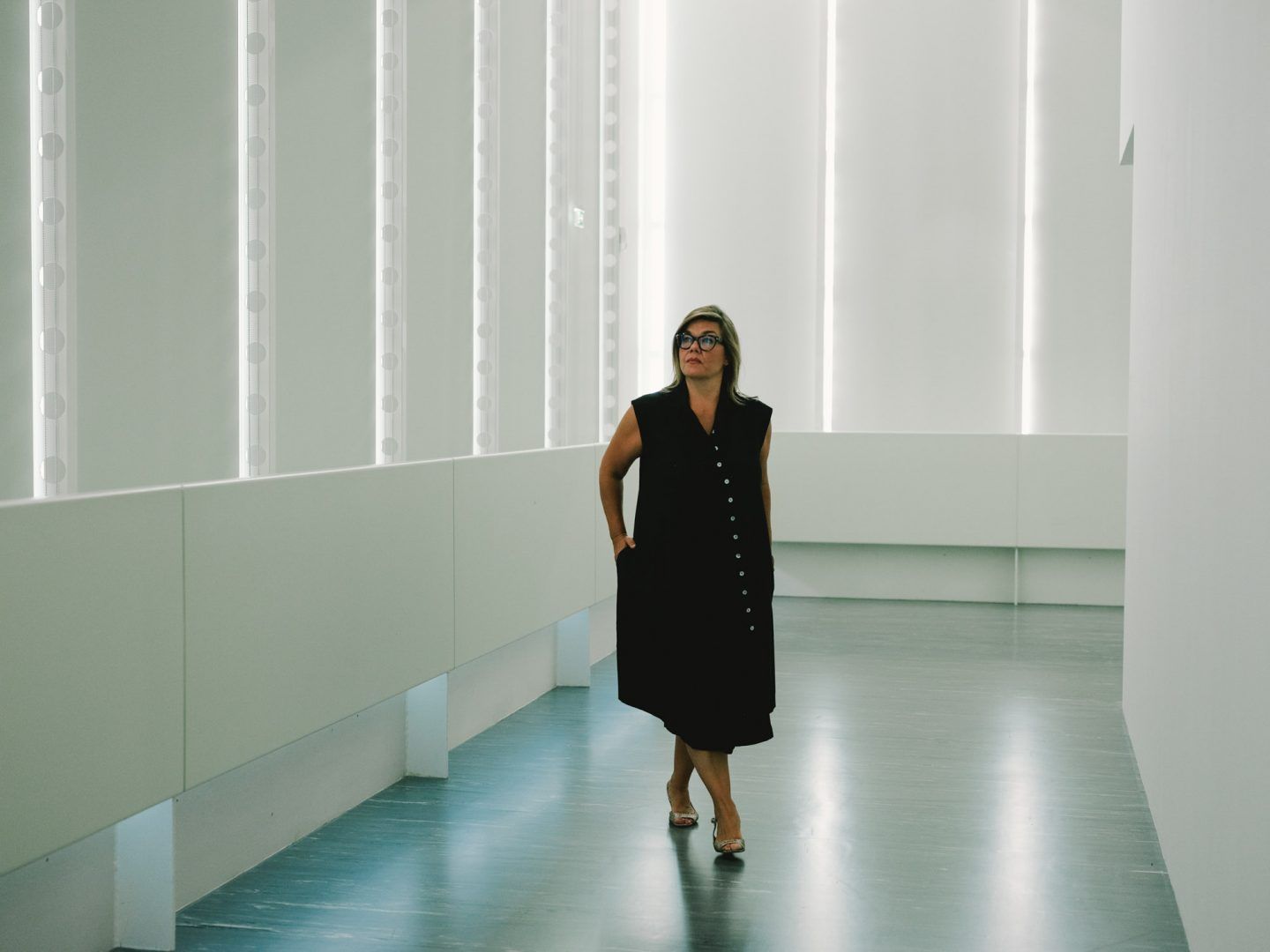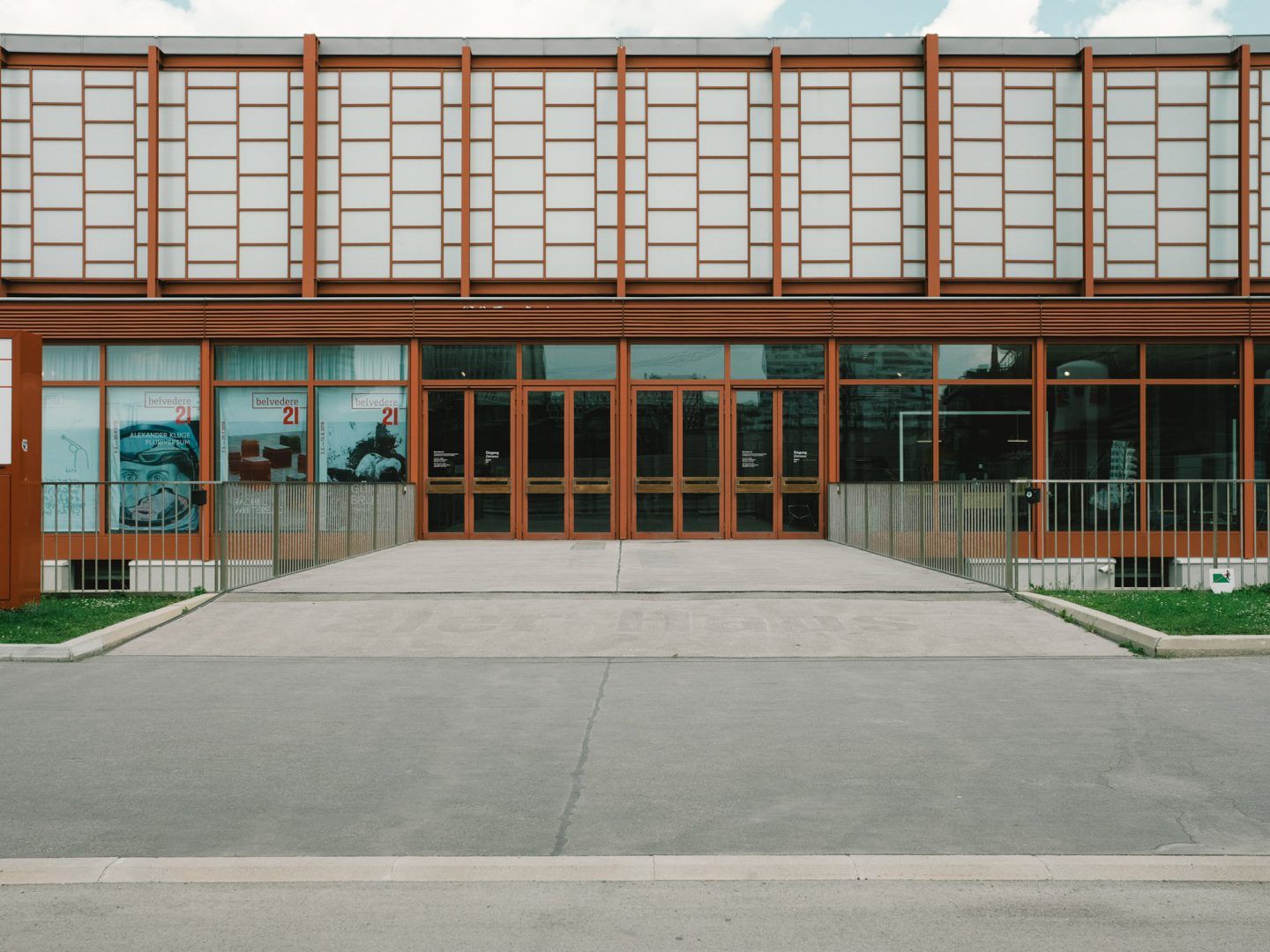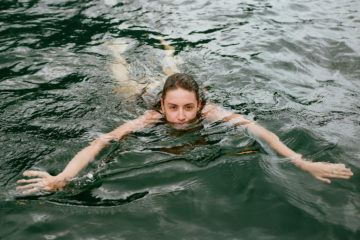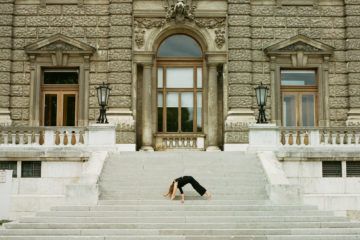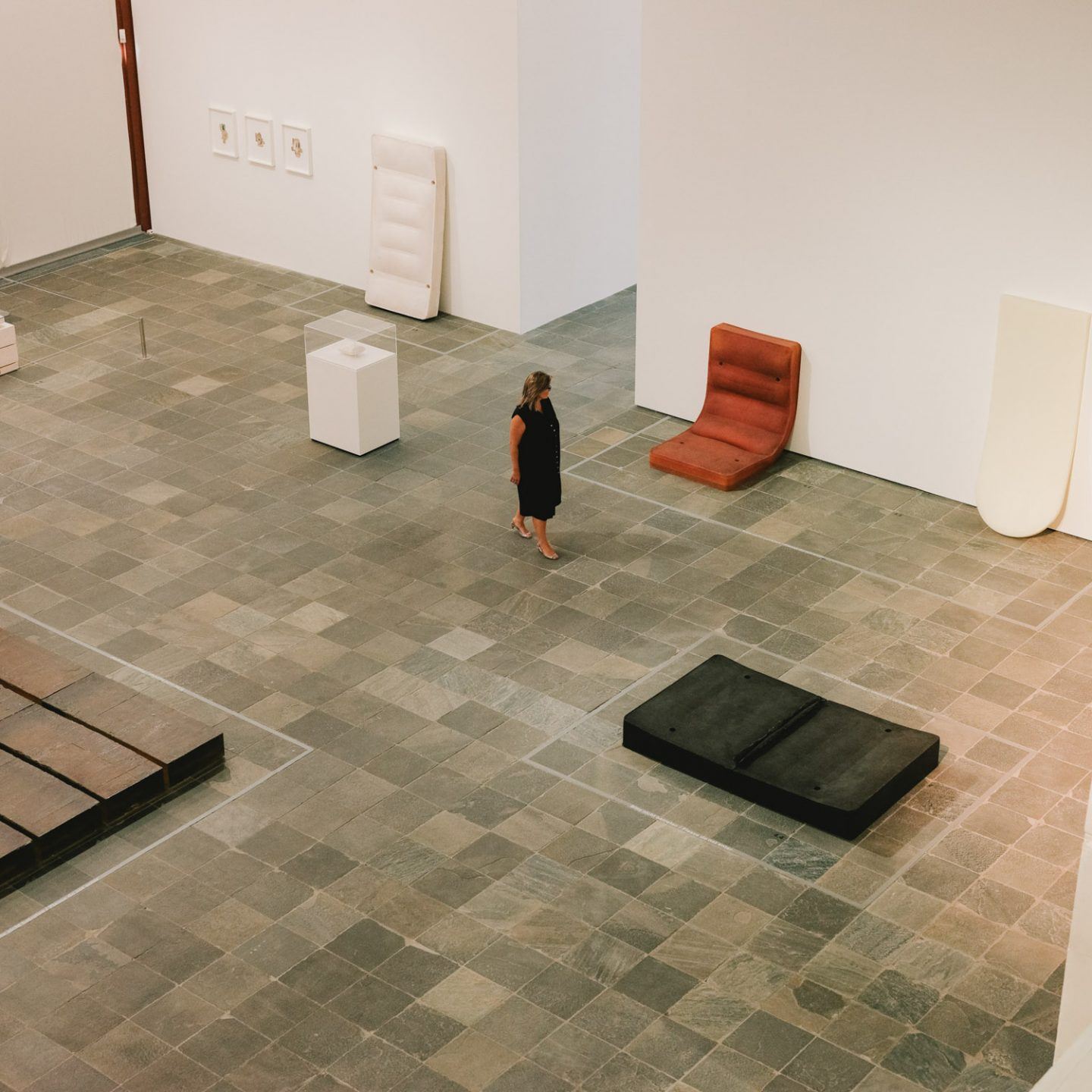
Lilli Hollein’s Vienna
- Name
- Lilli Hollein
- Images
- Daniel Gebhart de Koekkoek
- Words
- Anna Dorothea Ker
The director of Vienna Design Week guides us around the landmarks of her life in the Austrian capital.
Vienna’s rich architectural heritage is quick to reveal itself at every upward glance. Yet the layered stories its landmarks hold take some unraveling; best initiated by a local. As a lifelong denizen, director of Vienna Design Week and daughter of legendary architect Hans Hollein and the artist Helene Hollein, Lilli Hollein knows a thing or two about what’s behind her city’s impressive facades.
Together with Visit Austria, within the framework of their “Art of Discovery” campaign, which showcases the manyfold inspiring facets of Austria, we meet Lilli at her office in Schleifmühlviertel, where her elegant presence radiates calm amidst paperwork, prototypes and planning. The creative chaos evidences the intensive preparation phase ahead of the upcoming Vienna Design Week, this year in its 12th edition. Over coffee, Lilli fills us in on what to expect from this year’s edition, her love for the city, and what her father’s oeuvre reveals about the kind of person he was. Afterwards, we head off through the city to get Lilli’s take on five distinct buildings she holds in high esteem, and how they reflect the vibrant sophistication of 21st century Vienna.
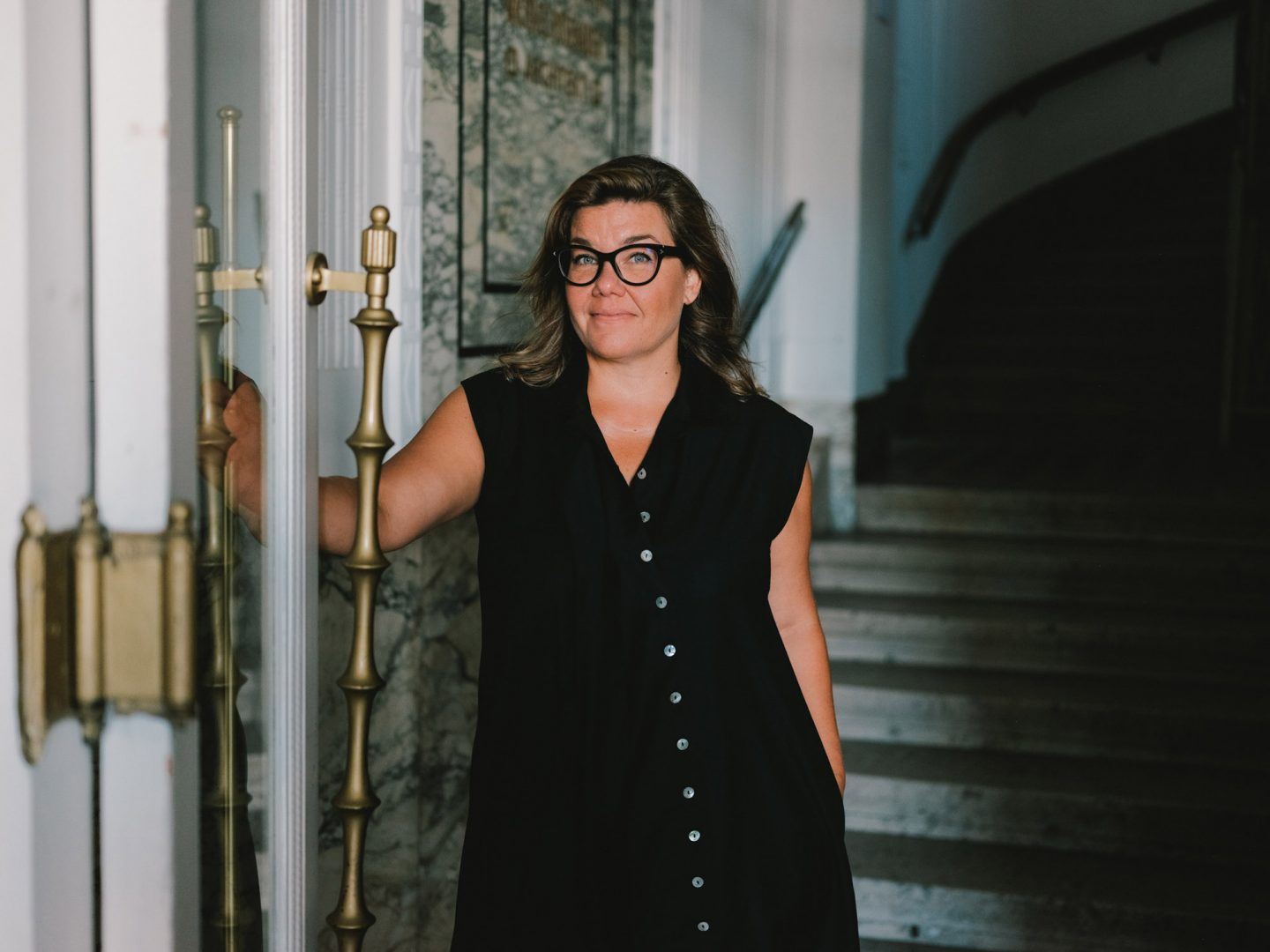
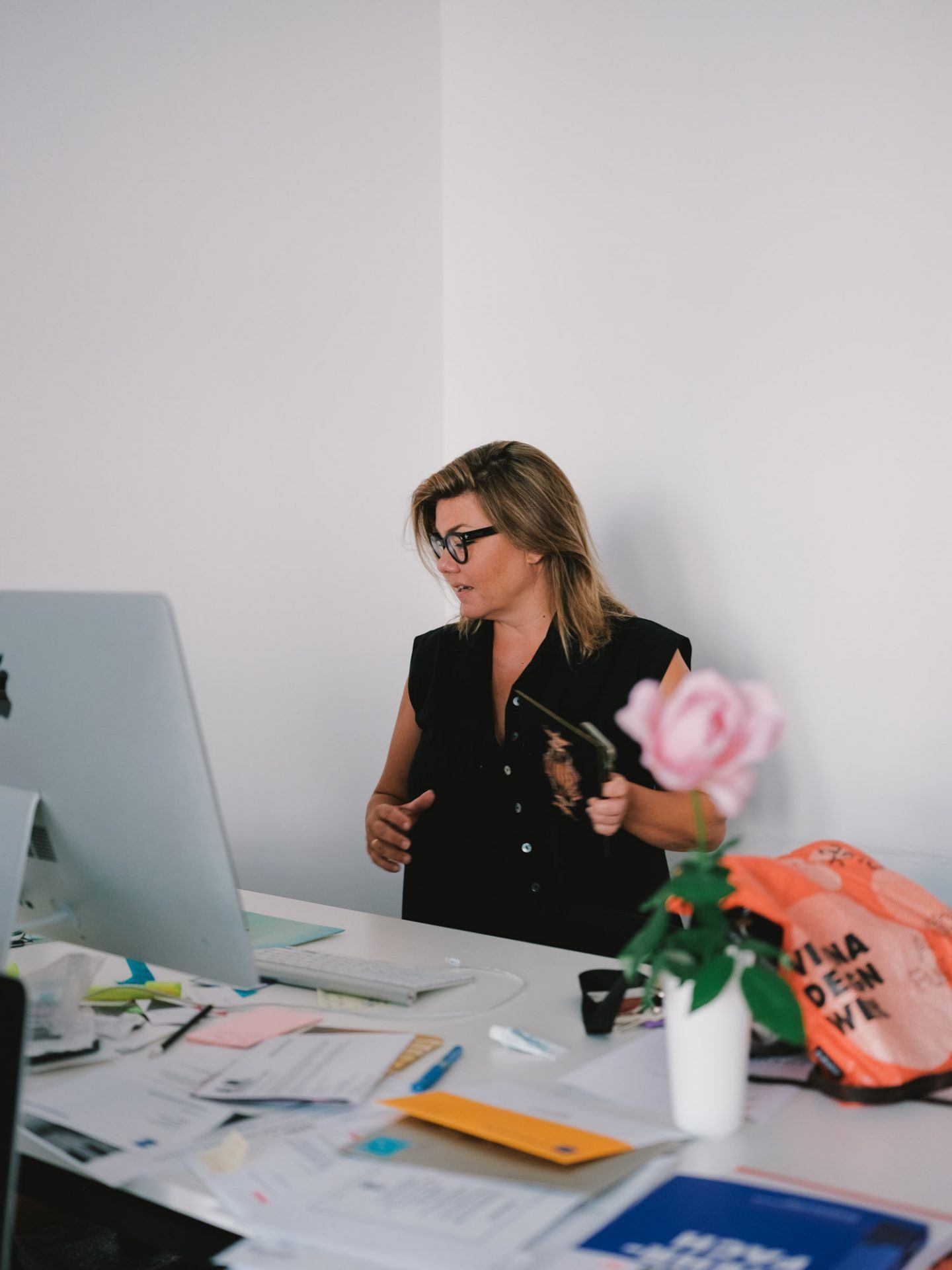
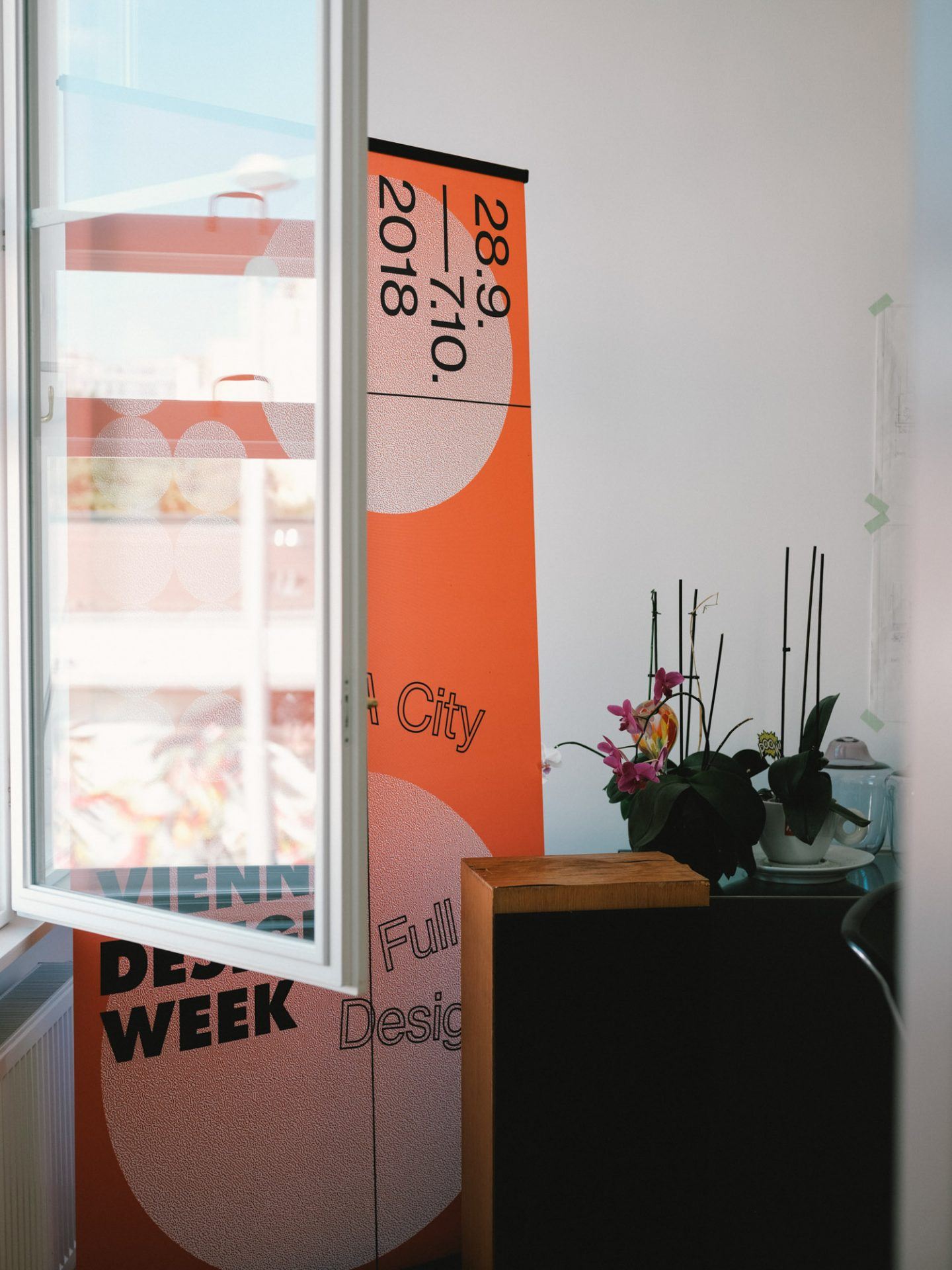
You founded Vienna Design Week 12 years ago with Tulga Beyerle and Thomas Geisler. What was your original intention behind its establishment?
We were aware that Vienna isn’t traditionally known as a design city, so we had to give people a reason to come here. We wanted to work with the city and its natural limits — something that makes the city so attractive, for example, is its culture of manufacturing. We wanted to make the festival an international one from the start, attract both design professionals and locals, and allow Viennese design fans to discover new areas and elements of the city.
What can we expect from the 12th edition of the festival this year?
There are a couple of aspects of the festival that never change, yet are new every time. The festival is built on two main columns: on one hand, the “focus district”, which changes yearly. This time it will be in the 7th, a district which we’ve been avoiding in the past, as it’s “the” creative district, but after 12 years, we thought it was time to base ourselves there. The other column is the guest country, which is Poland in 2018. Poland has a strong design heritage — it’s where most European furniture is manufactured, for example — and there’s a young creative scene there.
Then there are a couple of topics we’ll profile in a special way. Like almost every festival at the moment, we’re focussing in on augmented and virtual reality, but from a very artistic point of view. We’ve dedicated our graphic design format and a lot of talks to the topic of protest — an issue which seems necessary to address at the moment. “Passionswege” is another constant every year, which focusses on the design process. We team up manufacturers with designers, and finance most of the project in order to help the two sides meet at eye level. Our aim is to keep the whole thing experimental.
001 Vienna Design Week 2018 campaign image (photo © bueronardin)
002 VDW program partner Comploj – 1001 Nacht/Vienna Scheherazade – (photo © Comploj)
003 VDW program partner Design & Art – Showroom – (photo ©Design & Art)
004 VDW program partner Gottfried & Söhne – Ruby Star – (photo © Noa Yafe)
005 VDW program partner Schloss Hollenegg for Design – Legacy – (photo © Leonhard Hilzensauer)
What do you think Viennese design has come to stand for on the global stage?
Well, Vienna has a long design heritage, but there was a period where not so much was happening. It’s still so much identified with the turn of the 20th century — the Wiener Werkstätte (Vienna Workshop), Josef Hoffmann, Adolf Loos — the legacy of whom is very present, more so than the pre- and post war generations, who are absolutely important design ancestors. I think it was difficult for the generation in the 1980s and early 1990s, who wanted to emancipate themselves from this heritage, whereas the current design scene deliberately plays with that turn of the century legacy. This is something you could say provides the current outline for Viennese designers. In a very lighthearted way, there are a lot of links to tradition and the history of this place, without being conservative. It’s simply too present to be neglected. And then I think the Austrian scene, and the Viennese scene in particular, is very good at being experimental. Though many of the designers I most highly value, like mischer’traxler or breadedEscalope, do product design, they have very experimental approaches.
Having lived here more or less your whole life, what keeps you inspired to stay in Vienna?
There has been more than one moment where I was about to leave the city, but I’ve always come back, and I’ve stayed here for the last 12 years. I enjoy living in Vienna so much, and the city has transformed in the past decade in a lot of very positive ways. In terms of quality of life, cultural life, and open-mindedness, despite the current political climate. We still profit from the foundations that were built in the between-war era — a period known as “Rotes Wien”, when a socialist government started to work intensively on public housing. That was the beginning of the so-called “Gemeindebauten”. Not only are some of them amongst the most interesting buildings in the city, but this project was undertaken in a Vienna that still had all the glamour of Ringstraße, which was pretty new at the time, and for which many Medieval parts of the city were demolished. The model of strategically placing these buildings in areas that were already dense — or home to expensive villas — still works. That set the city up for integration, and for community — which is still a success today.
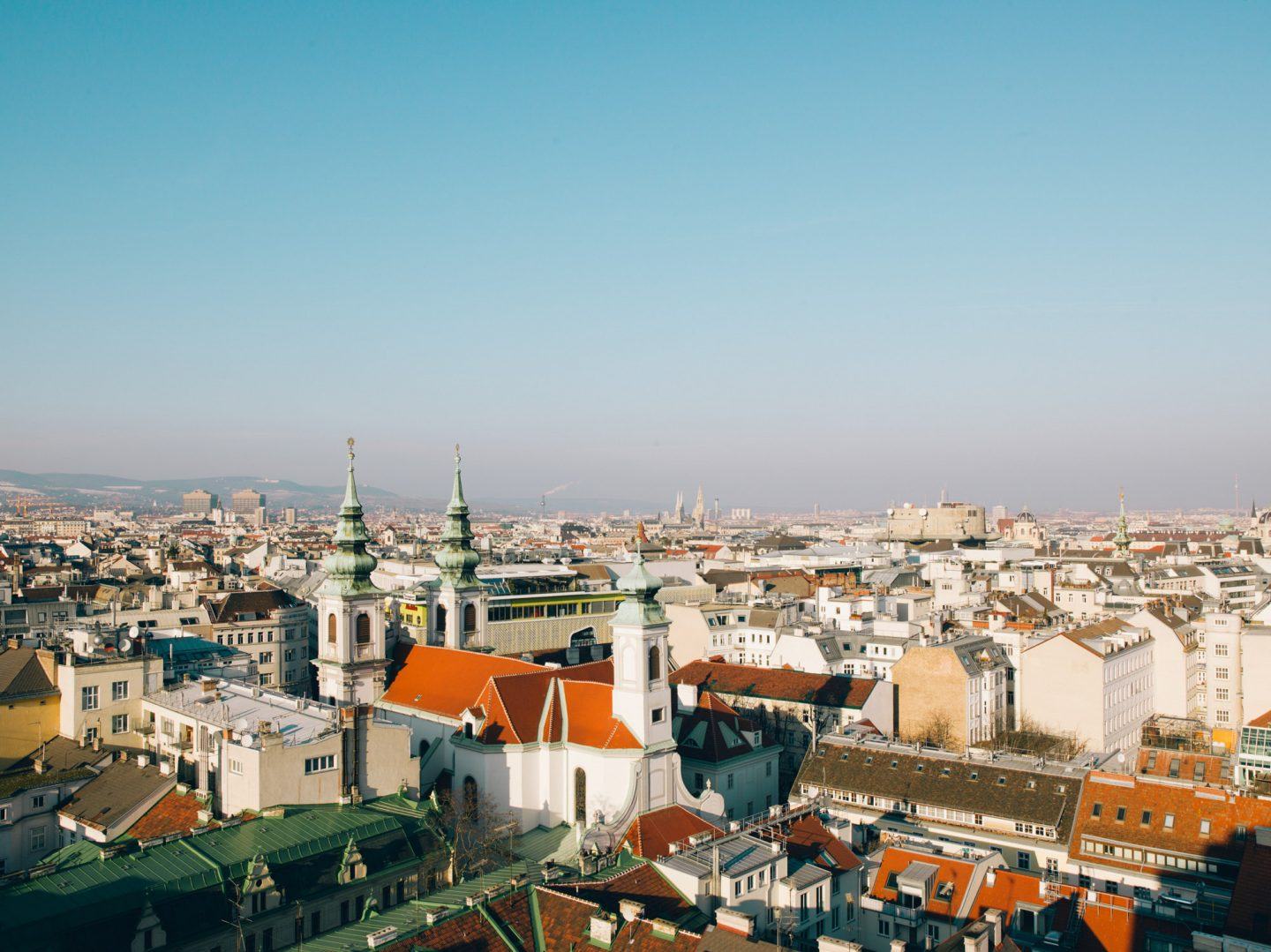
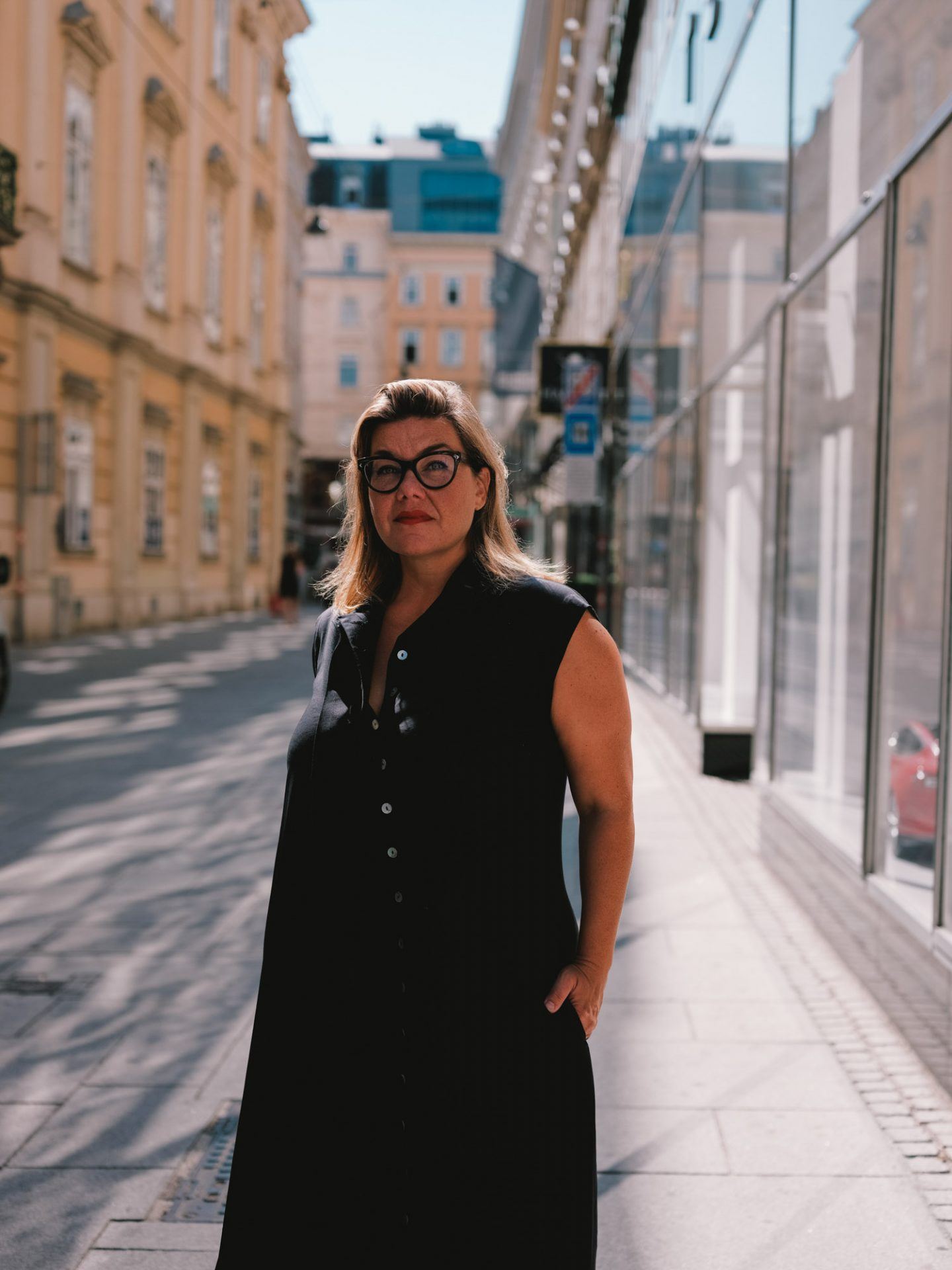
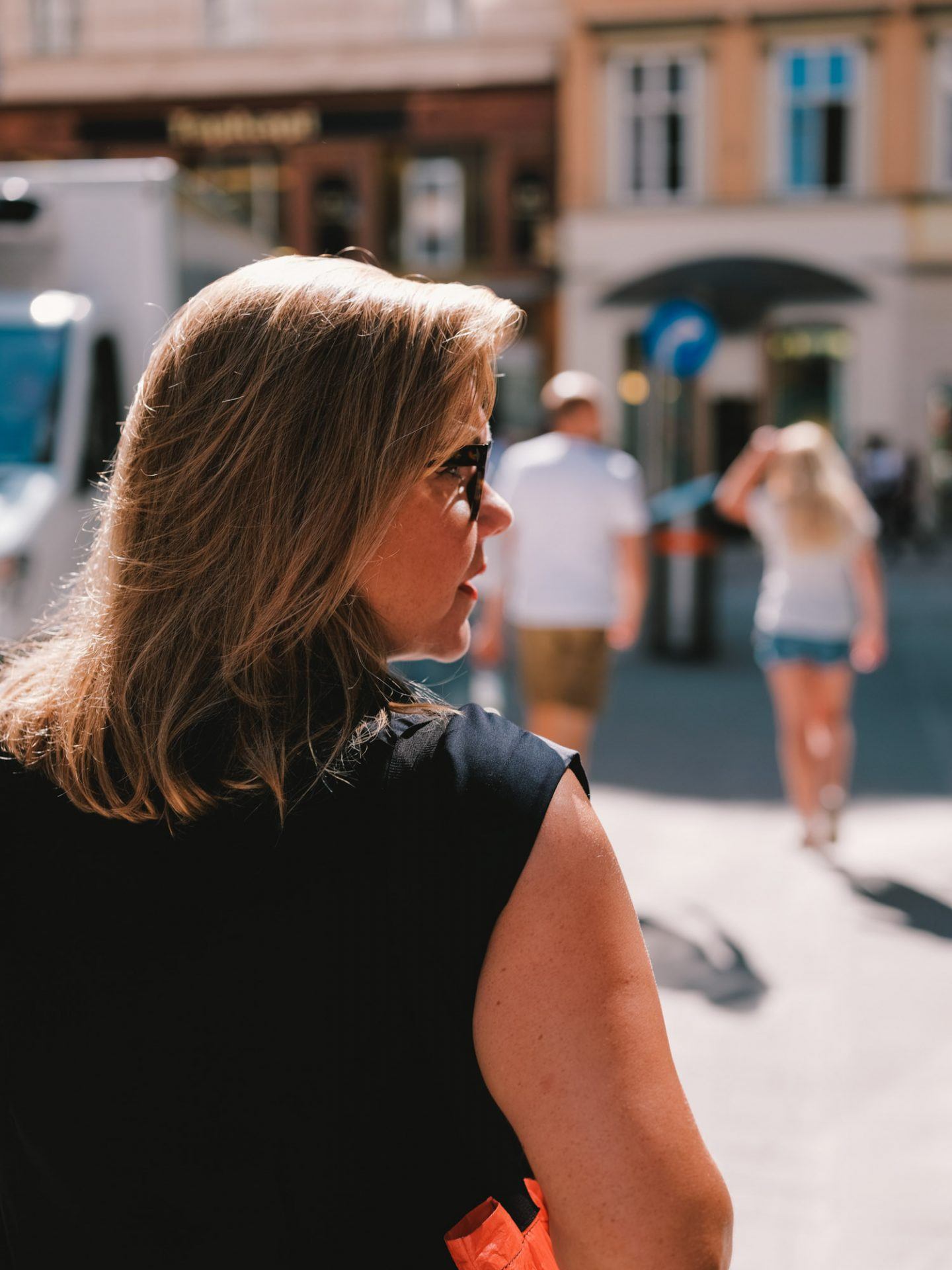
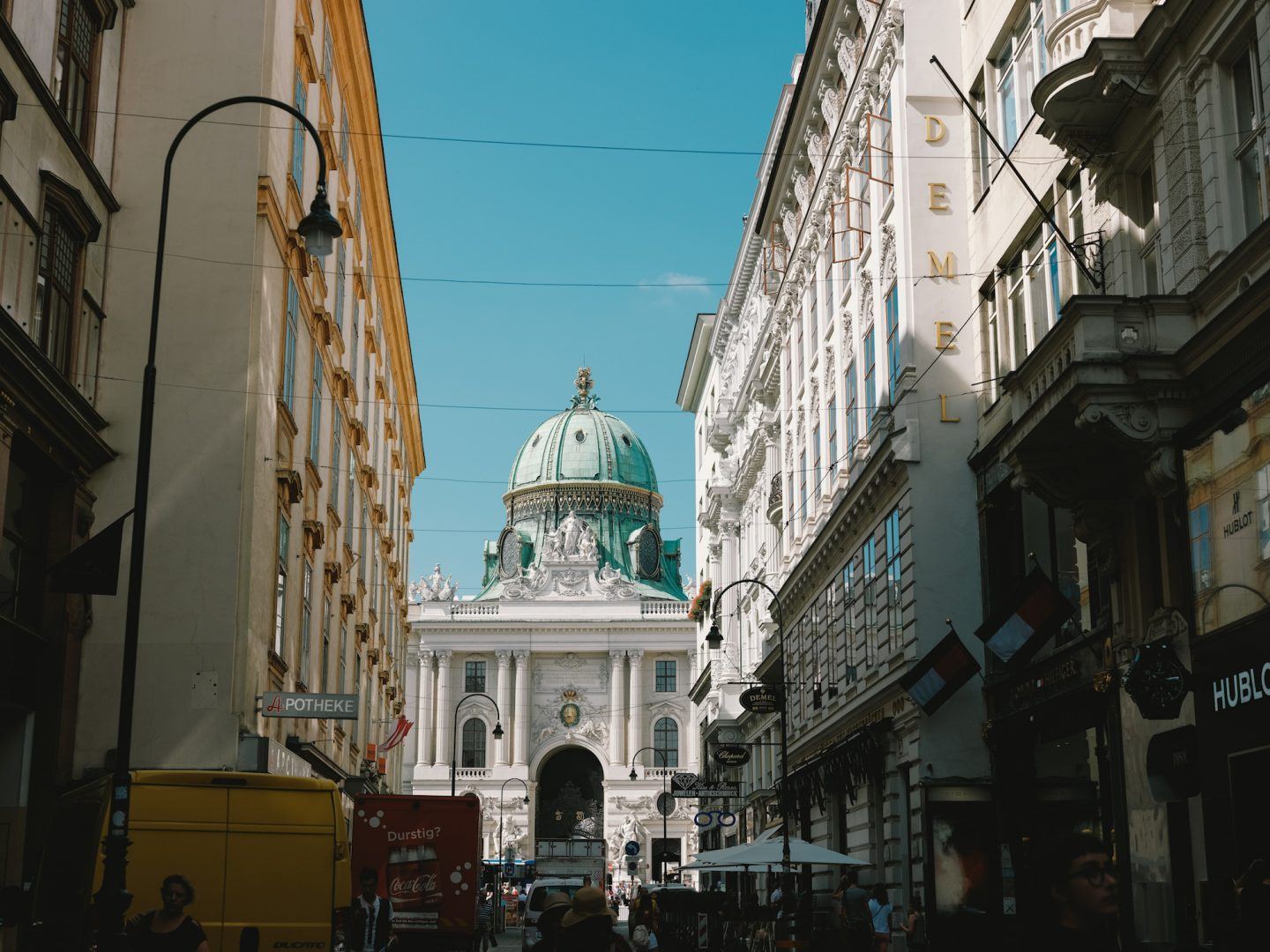
Your father, the visionary architect Hans Hollein, made a major contribution to Vienna’s architectural history. How has your father’s practice shaped your aesthetic point of view?
If you grow up in a family with someone as dedicated to their artistic work as our father was, you learn to understand the world through their lens. Both of my parents were very interested in traveling with us, showing us the world and the arts, from historical to contemporary, and that has had a major influence on where I am today. I’ve tried to get away from it in between — there were times when I didn’t want to have anything to do with art or architecture. Those times didn’t last very long [laughs]. Also, when you look at the oeuvre of someone you’re close to, you can understand a person through their work. My father’s work reveals a lot about who he was — a very courageous yet sensitive man, and someone who was always interested in where things come from, going back to the roots. Pueblo architecture was one of his strongest influences, for example. He absolutely valued other people’s work.
On that note, it’s time to embark on our tour to admire a few buildings of our own — ones that Lilli has selected for their individual flair, historical significance and the contribution they’ve made to their respective surroundings over the decades. At each destination, Lilli shares the importance of each place to Vienna, and to her own life.
Lilli Hollein’s Architecture Tour Of Vienna
Juwelier Schullin II
Hans Hollein (1981-1982)
Kohlmarkt 7
1010 Vienna
Our first destination is situated on Vienna’s most exclusive shopping street, and lives up to its location in its style and prestige. The second shop Hans Hollein designed for Juwelier Schullin is fronted by a curved blade resting on two wooden columns, resembling a weapon. “The shop was completed in 1982, and marks an important step in my father’s career,” notes Lilli, explaining that “Between 1966 and 1982 he had started a major career in architecture, and in 1982 was when Postmodernism started blooming. In terms of architecture and design, it was a time where you could play with materials — you could use things that in phases of minimalism you couldn’t even think about. So there’s gold, and tropical woods with strong grain. What this shop is saying — which is a recurring theme in my father’s work — is about rituals and approaches to adornment, which has played a role in the daily life of humans since they first started designing.”
The Former Candle Shop Retti
Hans Hollein (1964)
Today Juwelier Gadner
Kohlmarkt 12
1010 Vienna
A few steps down the street from Juwelier Schullin II is Hollein’s first significant commission, a 14.8m2 showroom-shop for the candlemaker Retti. With its striking aluminum facade, the futuristic shopfront stands out in contrast to the ornate Baroque buildings surrounding it. “Marius Retti, who commissioned this building, was a visionary man. He made super experimental candle objects — quite unlike anything that exists today.” How did the collaboration begin? “My father started by designing a fair stall for Retti, which dealt with the candle and the flame, and they got along so well that he commissioned my father with his first ever work,” says Lilli. The design won her father the prestigious Reynolds Memorial Award of $25,000 — more than the project’s total budget. “What’s important about this isn’t only how visionary the design was for the time,” she muses, “but also that the materials, like aluminum, which hadn’t before been used as a facade. Today, 50 years later, the material has survived perfectly. Even if it was his first work, it represents the essence of my father’s architectural language.”
Flakturm V L-Tower
(1942-1945)
Today Haus des Meeres (House of the Sea)
Fritz-Grünbaum-Platz 1
1060 Vienna
The next stop on the tour symbolises a darker time in Vienna’s history. We’re at one of Vienna’s six Flak Towers (“Flaktürme”): Massive concrete fortresses built as defense towers during WWII. Her appreciation for the original structure is twofold. “First, the Flakturm is a remainder of war — it’s like a memorial in the city, and six at that: three pairs of defense and lighting towers. They are these massive, brutal buildings that, as a child growing up in the city, of course you learn about them because they’re so imposing — you’re forced to ask yourself, “What is this?” The second, more contemporary reason, is “the work of artist Lawrence Weiner on the top — he was invited by Wiener Festwochen to create a temporary piece, which ended up remaining when he gifted the usage rights to the city. I think it’s the smartest comment you could place on this building to make it a memorial — it says “Smashed to pieces in the still of the night.” Lilli points out. “You see this writing from so many parts of the city, it’s written both in German and English. For me, it’s a landmark for the city but also a personal landmark. Whenever I’m on top of a building, that’s what I’m looking for — “How does the Lawrence Weiner work look from here?” Today, this tower houses an aquarium, Haus des Meeres (House of the Sea) — much to Lilli’s chagrin. “Sadly, the building is being reconverted, which will obscure its architecture qualities, and blur its purpose as a memorial. It’s one of the rarest, and best, examples of art in public space, in my opinion.”
Umspannwerk Favoriten
Eugen Kastner & Fritz Waage (1929-31)
Humboldtgasse 1-5, 1100
Vienna
Futurism meets Soviet-era constructivism in this remarkable triangulated transformer station, completed in the early 1930s and still serving its original purpose today. “This is a building which I’ve passed by so many times that I’ve lost count,” says Lilli. “You can immediately tell it has a special purpose and a special atmosphere — and style,” says Lilli. However, she has never stepped inside it — until now. A tour through the neatly ordered, sparse interior, its machinery and its cables — delights her. “It always felt un-Viennese to me — maybe that goes towards why I like it,” she continues. “What’s also interesting is that the area around it has changed so much in the past year. Favoriten used to be a pretty industrial workers’ area centering on a train station. The area, particularly around there, has totally been transformed into a new housing and living area with a huge park. This makes the Umspannwerk even more foreign as it sits there, in amongst all this change. I do like industrial buildings, too, which is another reason it appeals to me, Constructivist flair aside. That’s to say, amidst this residential area, you have these buildings that serve a particular purpose.”
Belvedere 21
Karl Schwanzer (1958, reopened 2011)
Arsenalstraße 1
1030 Vienna
The final stop on our tour takes a more contemporary turn. Belvedere 21 was designed by Karl Schwanzer as a former pavilion for Expo 58 in Brussles at the end of 1950s. After the fair, it was brought to Vienna, and has housed contemporary art ever since. “I spent a lot of my childhood here,” explains Lilli. “At that time, the space — then known as the “20er Haus”, as it was known in the 20th century — was such a vibrant place, one that has had always fascinated me. For about a year, it has been connected to the Belvedere, which has historical, classical collections and stages contemporary stuff there. The Fritz Wortruba Centre is there too — he’s one of Austria’s most interesting sculptors.”
As we walk through the two-story exhibition space, she explains, “It’s not only the original architecture of the building that attracts me, but also the extension built by Adolf Krischanitz — who studied with Karl Schwanzer, and is one of Austria’s best regarded architects of his generation; someone I admire very much. Then there’s the sculpture garden that blurs into the surrounding Schweizer Garten. It’s always been not only a building, but an area with a certain atmosphere.” The development of the surrounding area — not far from Lilli’s apartment — is as fascinating to Lilli as the architecture itself. “The pavilion was standing alone next to the train station for decades. Now there are a lot of residential high rises being built. So the building currently faces a couple of Renzo Piano buildings, and there are more to follow. In a few years, it will be a tiny box surrounded by huge columns, but for an area that’s developing so rapidly, it’s great that there’s an important cultural institution sitting right in the middle of it.”
Thank you for allowing us to discover your Vienna, Lilli!
—
This feature forms part of an ongoing collaboration between iGNANT and Visit Austria for the “Art of Discovery” campaign. This campaign brings together four artists who travelled through Austria together to rediscover the landscapes of their country in a new light. In addition, eight creative luminaries, including Lilli Hollein, share their take on the links between their work, inspiration and their environments. Discover their perspectives here.
Want to see more of our adventures through Austria? For The Art Of Discovery, we went on a road trip through the Austrian countryside; you can see the full trip here. Shortly after, we spent a day in Vienna, visiting the city’s most spectacular and surprising spaces. Read more about our time in Vienna, here.
All images © Daniel Gebhart de Koekkoek for IGNANT Production
